The Quest For The Worst Adventure Game Puzzles - The Journeyman Project 3: Legacy of Time (Part 2)
By ZombiePie 6 Comments
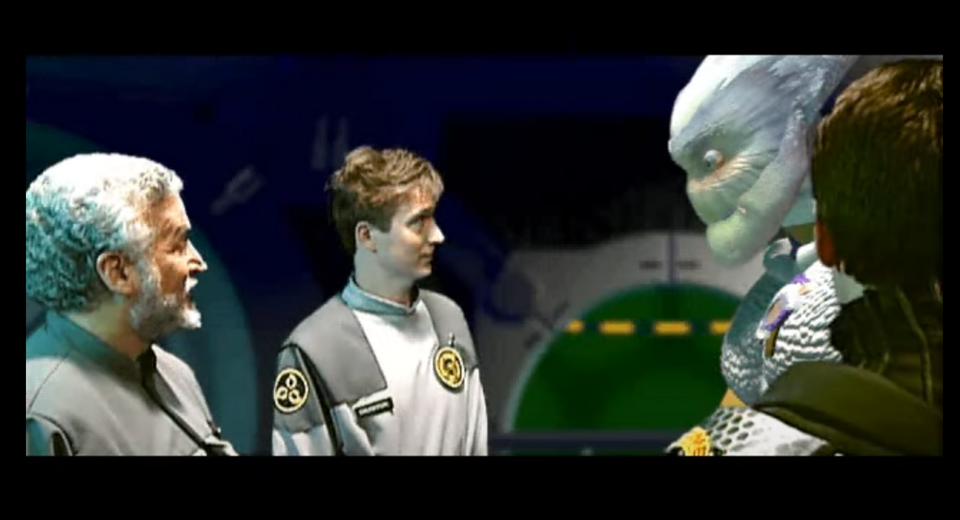
Author's Note: This the second part of a two-part series on The Journeyman Project 3: Legacy of Time. If you missed the first part please click this link:
If you enjoy this blog and would like to read my other adventure game retrospectives, here's a list of my previous episodes of this series:
- Episode 1: The Dig
- Episode 2: Atlantis: The Lost Tales
- Episode 3: Loom
- Episode 4: Drowned God
- Episode 5a: Indiana Jones and the Fate of Atlantis Part 1 & Episode 5b: Indiana Jones and the Fate of Atlantis - Part 2
- Episode 6: The Journeyman Project: Pegasus Prime
- Episode 7a: The Quest For The Worst Adventure Game Puzzles - The Journeyman Project 2: Buried in Time (Part 1) & Episode 7b: The Quest For The Worst Adventure Game Puzzles - The Journeyman Project 2: Buried in Time (Part 2)
Shangri-La - [April 14, 1219 A.D.]
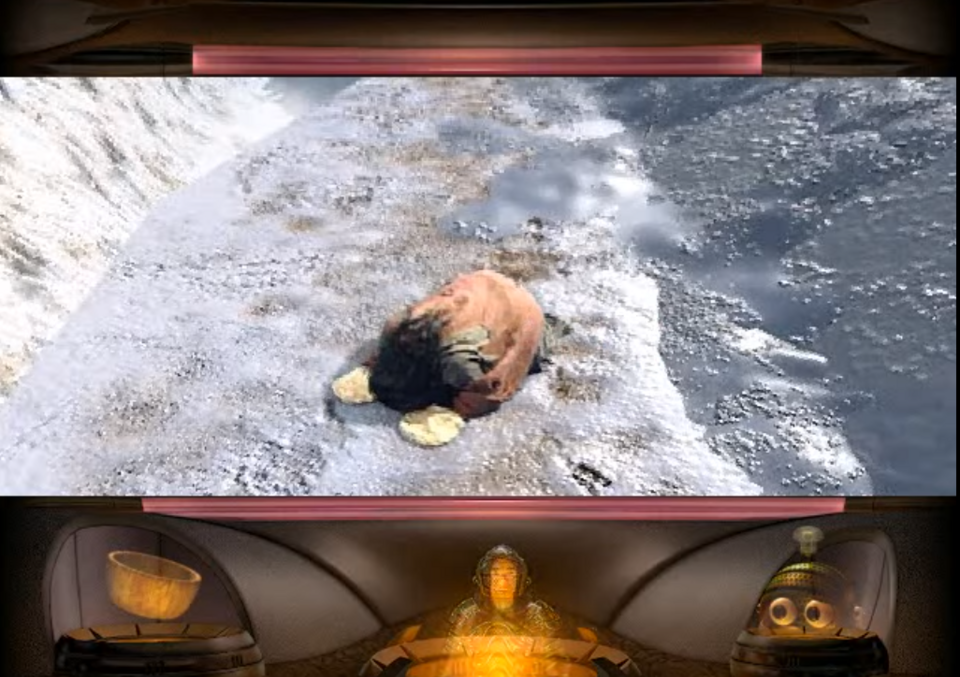
Collecting The Pilgrim Guise & Examining The Green Buddha Statue - [Rating: 2/10] - Shangri-La is the most "by the numbers" portion of Legacy of Time by a country mile. The core conceit of the level is for you to locate six color-coded Buddha statues and then provide these statues with an offering which results in them handing over a colored stone that will allow you to ascend a temple. When you first warp into the Himalayan Mountains, things start much as they did in Atlantis. Arthur chimes in at the start that Gage should capture a guise before moving further into the level, and in the case of Shangri-La, there is a praying pilgrim that you can copy. After assuming the form of the pilgrim, you can make your way into the monastery and locate the first Buddha statue. The trick is to have Arthur translate the text at the base of these statues, so you know what offering they require. For example, the green Buddha statue signifies knowledge and wants a book, but more on that another time. As expected, this first sequence is a tutorial about what to anticipate at Shangri-La. However, it's only decent at best, as the game doesn't provide an "easy" statue right from the rip, nor does it make the location of the figures explicitly known to the player.
Getting The Yellow Buddha Stone - [Rating: 4/10] - While the green Buddha statue is the first you encounter, it is also one of the last you can complete. As such, you need to move on and continue to the statue's left until you locate a greenhouse. Inside, you will find a gardener who explains that the "wishing tree" is sick and dying. When you enter the garden, find a scaffold and ascend the stairs on it. While at the top of the platform, pick up a knife and a map. Next to the scaffold is a yellow Buddha statue, and if you read the inscription on it, you will learn that it is looking for fruit. Near the statue, find a water grate, open it to descend into the tree's roots, and use the healing water from Atlantis (see Part 1 if you forgot about this step). When you exit the underground chamber, find an apple growing from the tree and place it in the bowl on the statue. This action will result in the figure providing a yellow stone.
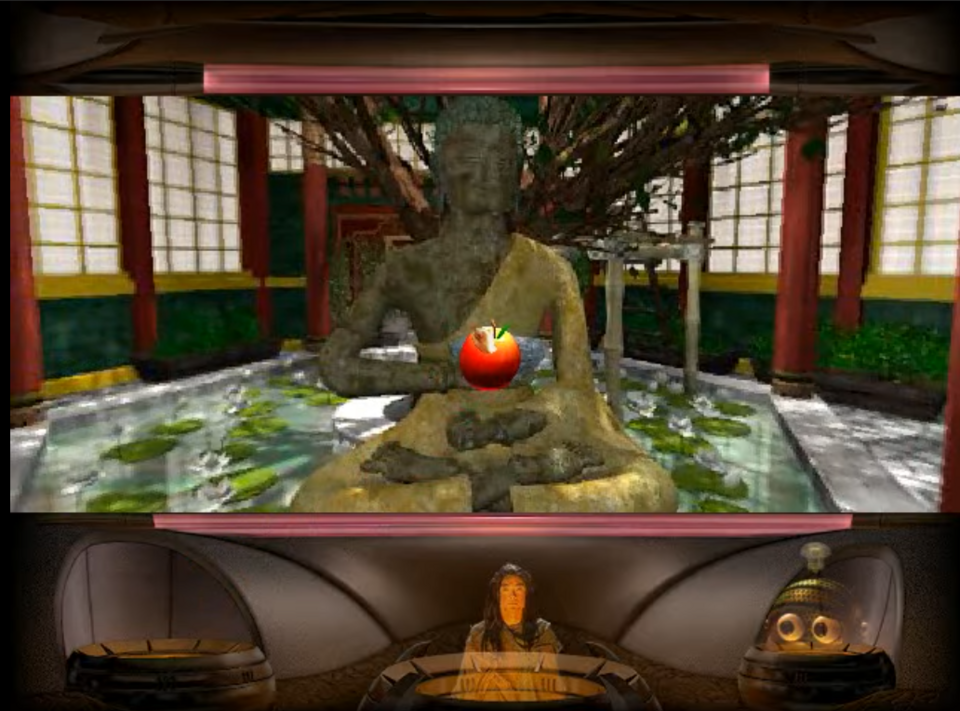
Getting the knife and tunnel map is the part of this sequence that many people forget, but both are incredibly important. It is also essential to talk to the gardener as they are the only person who will warn the player about the underground tunnel system. Navigating the tunnels will be a royal pain in the ass if you don't have the map or don't know what the fuck you are doing. Otherwise, the yellow Buddha statue is a fun introductory puzzle at Shangri-La. Everything you need to do is in front of you, Arthur's hints are helpful if you need them, and there's even an NPC in the background who is willing to assist. Finding the exact place in the roots to use the healing water is maybe the most challenging part of the puzzle, and even that isn't that difficult to complete.
Stealing Genghis Khan's Sword - [Rating: 8/10] - After you capture the yellow stone, it is time to return to the grate by the wishing tree. This time, however, turn to the left of where you used the healing water and notice there's an entrance to a tunnel system. This entrance leads you to the underground steam tunnels I mentioned earlier. Now, I understand what the game is trying with the steam tunnels. The chambers have doors that need to be moved to unlock passages to other rooms. It's your usual run-of-the-mill lock and lever door puzzle, but with one major annoyance. You can only switch the placement of the doors from their fronts and not their backs. This design decision is a significant problem when you try to trace your steps back to an entrance by walking backward but cannot because one of the switched doors is stuck. There are eight main chambers; you can only reach half of these rooms without moving the switches. More importantly, there's a secret chamber that leads to the Black Buddha statue, and there are environments you can only reach if you navigate the steam tunnels. If I were judging the steam tunnels alone, they would rank reasonably high by my metrics. The tunnels are monotonous, and the exits and entrances to different rooms are sometimes tricky to find. It is also worth mentioning that the markers that indicate your placement on the map are obtuse and often challenging to see.
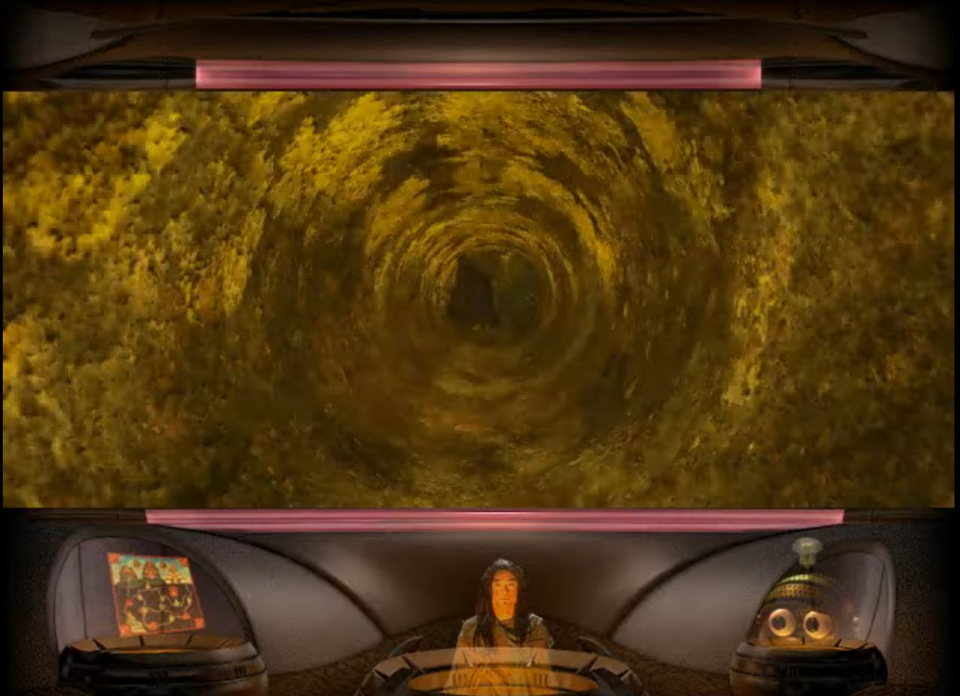
No matter, let's talk about the first reason why you enter the steam tunnels: stealing Genghis Khan's sword. For this puzzle, to give you a better sense of how disorienting the tunnel system is, I'll outline how you even get to Khan in the first place. I will not do this with subsequent puzzles because I'd rather shove a spork into my testicles than meticulously lay out how to explore these fucking tunnels. From where you first enter, continue forward until you see a room with a cross on its ceiling. If you look at the cross, Arthur will chime in about the symbols in every room and begin to mark your location on the map you picked up by the wishing tree. Continue forward to the room with two interlocking circles. Move forward until you find yourself in a steam pit and take the forward path to the room with a conch shell on its ceiling. In this room should be a crank or disc that you can click to block one entrance but unlock a new one. Enter the new entrance, and if you examine the map, you should be in a room symbolized by a conic section. When you use a ladder in this room, you will find yourself in the tent of Genghis Khan. Your mission here is simple, find and pick up Khan's sword before he notices you and knocks you back down the ladder. The timing here is harsh. The game gives you seven to ten seconds to locate the object. Once you find the sword, you need to click it to add it to your inventory.
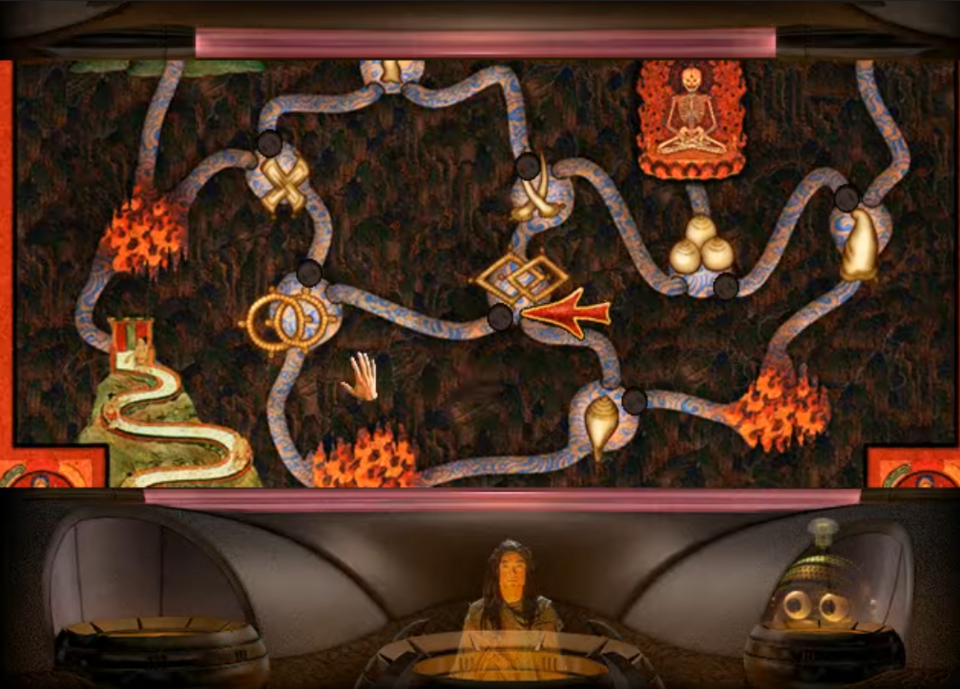
This puzzle is essentially a hidden object point-and-click puzzle. Usually, I wouldn't be too harsh on one of these puzzles, but the propensity of bullshit ratchets things up to a breaking point. The fiddly tunnel system adds a point. Not knowing what you need to steal from Genghis Khan adds another point. The fact it is a timed mission adds a final point. It's a lot of bullshit for what amounts to needing to add a single item to your inventory so you can use it on a statue. Finally, I cannot emphasize enough how little signposting the game does to direct you to this sword in the first place. When you eventually locate the red Buddha statue, Arthur translates the inscription and surmises you need an artifact of war to please it. Even if you press him further, he'll direct you to inquire Khan about his activities, but not necessarily to steal his sword by finding an obtuse passageway underground. I have a hard time imagining a world where someone can solve this without help from a guide or the in-game hint system.
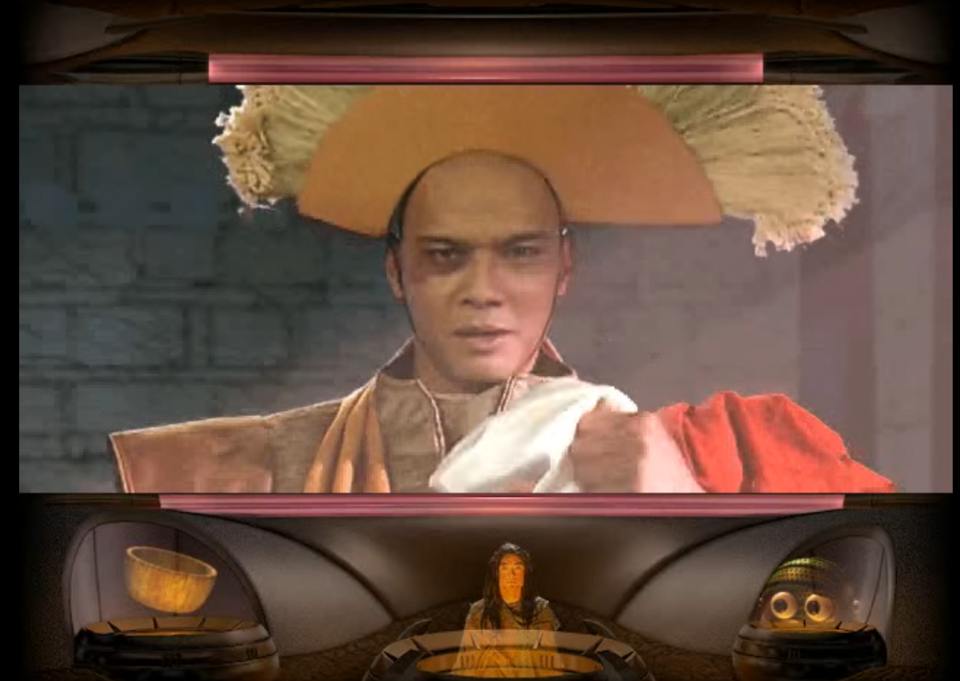
Opening The Bridge - [Rating: 2/10] - After your little run-in with Khan, Legacy of Time chills out for a bit. Return to the room represented on the map as a conic section with the sword in your possession. Though optional, there's a way to set up the shiftable gates to make your life easier when you need to melt the black Buddha statue, but I will not go over that here. At the least, I recommend shifting two of the grates to explore the room that houses the black Buddha statue and have Arthur clue you into something you will be doing later. I will say that the black Buddha statue is made from butter, and you will eventually need to turn it into buttermilk using SCIENCE! However, there's a critical step you CAN'T skip: finding a bowl near the butter statue and picking it up. With this item in tow, it's time to head back to the surface, and there are several ways to accomplish this. If you end up in the first steam room, you can continue forward, run into a grate, click a crank, and then open the grate to return to the green Buddha statue. From here, cross a rope bridge and enter the second half of the monastery. The objective is to enter the gatehouse and interact with the guard to open a bridge that leads to the town's leader. When you find the guard, he will agree to extend the bridge, but only if you provide him with a silk scarf. If you remembered to pick this up from the boat with the chained captain in Atlantis, this is an easy "gear check." If not, then you are in for a long backtracking adventure! Even then, it's not an impossible task as it is a simple rendition of the "pick-up and deliver" puzzle format.
Collecting The Lama Guise & Blue Buddha Stone - [Rating: 3/10] - When the bridge becomes available, cross it and enter the exclusive "Prayer Hall" section of Shangri-La. The head Lama occupies a building to the right of the giant Buddha statue. Capture his guise and then begin talking to him in the form of the pilgrim. When you have exhausted all of his dialogue options, enter the central room in the building and locate the blue Buddha statue. After Arthur translates the inscription, place the beggar's bowl from Atlantis on the figure to receive the blue stone. Like before, the difficulty of this puzzle stems from whether or not you remembered to pick up a random object from a different environment. If you did not, you end up stomaching a fair amount of aimless backtracking. However, once you have the item in question, all you need to do is select it and click it on the statue. That, in and of itself, is as simple a puzzle can get.
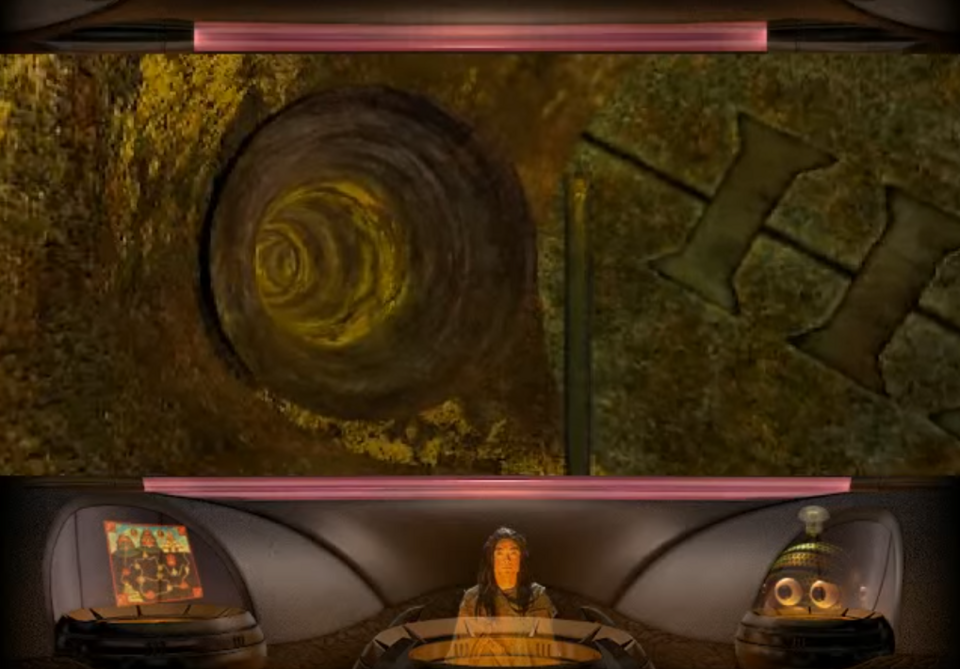
Collecting The Red Stone & Genghis Khan's Secret - [Rating: 2/10] - Let's return to the issue of the Lama. If you talk to him as the pilgrim, he mentions wanting to test your understanding of the principles of Buddhism. However, he does not hint at what his test might entail or what he wants you to study. Nonetheless, you can collect the red stone from the red Buddha statue to the right of the building he is in and to the left of Genghis Khan's tent. That is, as long as you remembered to snatch Khan's sword from earlier. If you decided to skip picking up the blade before talking to the head Lama, you must return to the steam tunnels. The good news is that if you have the item they are looking for, you only need to click it on the statue to get the stone it is holding. The second part of this puzzle involves talking to Khan, but in the form of the Lama and mentioning the test the Lama teased. Khan will blurt out all the answers, but the funny note is that they are all surface-level questions about the Buddhist belief system. I wonder if you can skip this step and go immediately into the test if you have a good understanding of Buddhism as a scholar or practitioner. Nonetheless, the sequence here is pretty straightforward, and I like how both parts are conveniently next to each other.
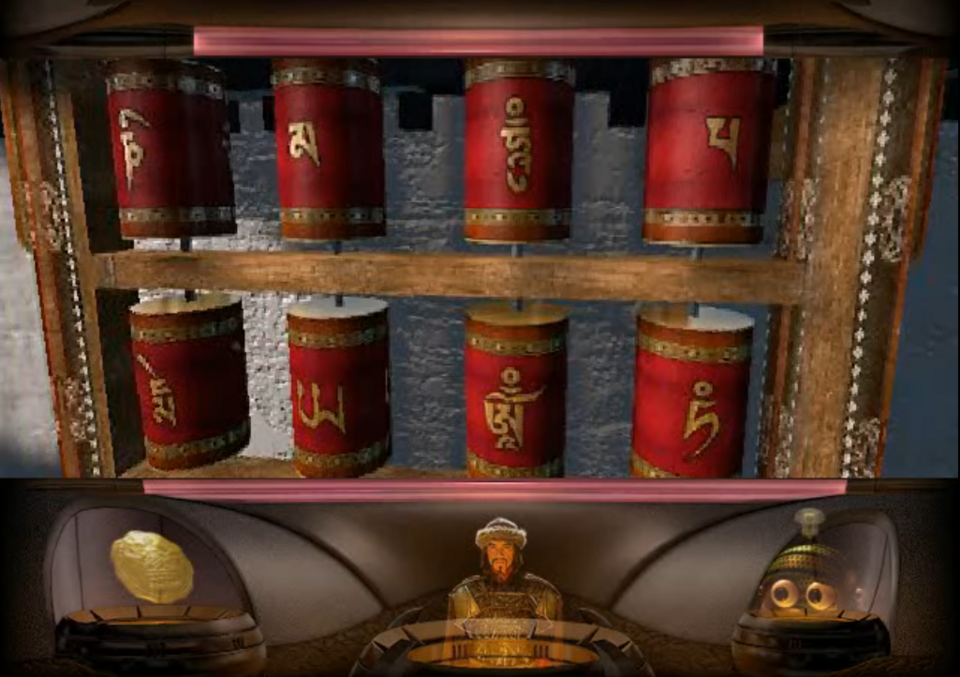
Collecting The White Buddha Stone - [Rating: 5/10] - Oh, no. The time has come. It is finally time for me to review and rank an audio/music puzzle. When you examine the White Buddha statue to the right of Genghis Khan's tent, you will notice it carries a lute and does not have the expected dish for placing an item. This statue requires you to turn to a series of prayer wheels and play a musical song. However, before you can have a go at playing this song, which is found on the statue's inscription, you need to repair one of the wheels. To accomplish this task, locate the olive oil you collected in Atlantis and apply it to the faulty wheel. Once done, you need to fan through and find the wheels that play the sounds "Om," "Ma," "Ni," "Pad," "Me," "Hum," and in that order. It takes time to determine which wheels play those tones, and the game assumes you are taking notes as it does nothing to differentiate the wheels visually other than the Chinese characters you may or may not be able to read. There's a bit of trial and error design here that can easily frustrate some, but it's nothing too out of the ordinary. Plus, the correct order of the notes is not exactly a secret.
Passing The Lama's Test - [Rating: 4/10] - With the red and white stones out of the way, it is time to return to the head Lama but while under the guise of Genghis Khan. With the information that you picked up from your talk with Genghis Khan hopefully still in the back of your mind, you should be prepared for the wizened sage's "test." I emphasize the word "test" because knowing which dialogue tree leads to the one question you need to answer is the hardest part. I genuinely spent upwards of seven minutes listening to the Lama drone about his daily routine or his recommendations about how to live the best life before accidentally reaching his question on what is the source of suffering. As I said, the question is about as basic as possible, but the tricky part is finding it in the first place because it is the third or fourth part of one of five dialogue trees.
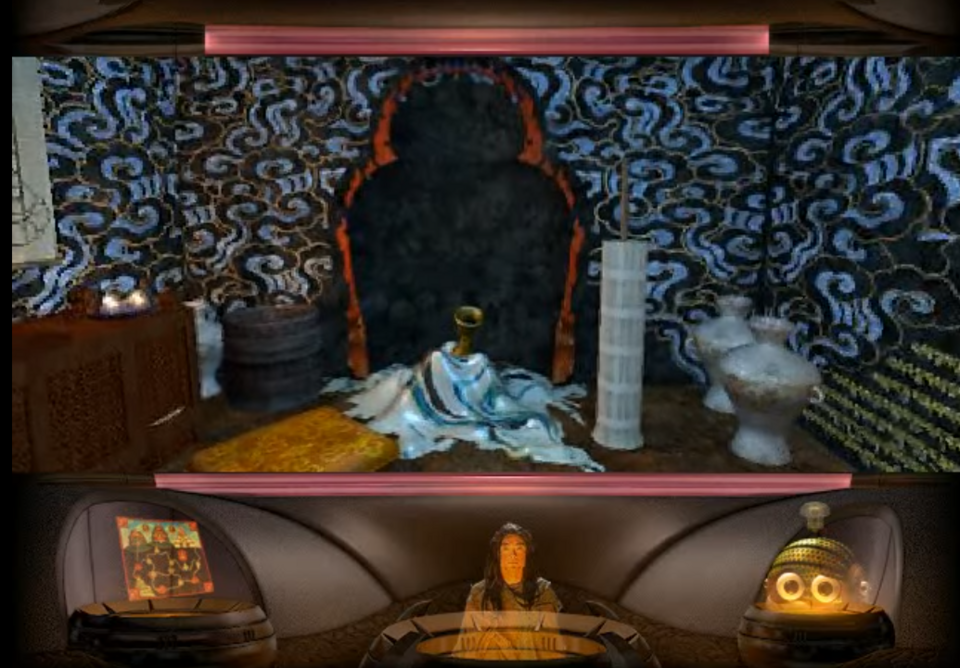
Melting The Black Buddha Statue - [Rating: 9/10] - DEAR GOD! I almost gave this puzzle a ten but refrained from doing so because you can make this sequence easier if you do some prep work. As I mentioned, you can fiddle with the gates to cut off unnecessary avenues and exits. This playthrough being my first go at the game, meant I did not know how to do that and had to suffer a harrowing fate. That fate, mind you, involved swapping between the same monotonous steam tunnels and low-res map twenty to thirty times. But I am getting ahead of myself. When I first discussed the steam tunnels, I briefly explained the presence of a black Buddha statue made of butter. To get the statue's stone of power, you'll need to melt it by directing a current of steam from the underground steam pits towards the Buddha statue. If there is one positive, user-friendly thing to note about this puzzle, it must be Arthur. If you get disoriented, he will tell you precisely what you need to do in the steam tunnels and even chimes in when you have affixed the gates in the correct position to melt the statue. And that's about it! The game does a shit job of communicating what you need to do, and the map is obtuse enough that it is not immediately apparent where each of the possible gates exists.
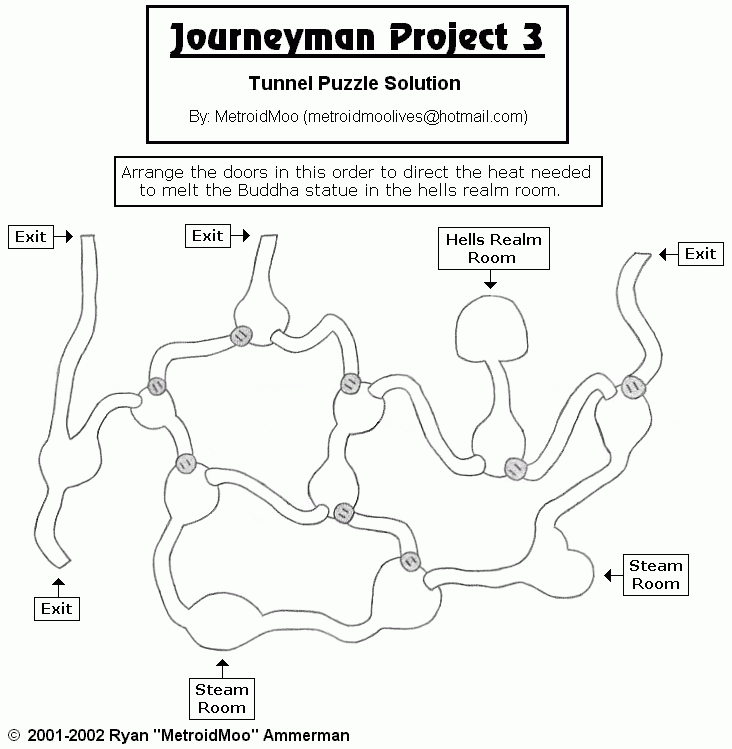
When I first attempted this puzzle, I was unaware that you need only one pathway leading to the Buddha statue. I had two vents directing heat to the figure, which apparently dilutes the steam to where it does not get the job done. Likewise, the two steam rooms need to be connected, and you cannot just vent one through one pathway and the other through a different one. On top of that, let's say you realize you made a mistake with a gate on the upper right portion of the tunnels. The issue is that getting back to correcting that mistake is an uphill task because you can only switch the gates from one direction. Refer again to the GameFAQ solution screencap above for a minute. Let's say you are at the upper-left exit. You can switch things up in the first circular room you enter with a gate, but NOT the second room because that switch only works from the OTHER SIDE! I somehow solved this by running a factorial calculation that eliminated the known incorrect positions for the gates after some trial and error. However, my inability to conveniently travel to where I needed to get to constantly reared its ugly head. On top of that, you can screw yourself over and not know how to unfuck yourself. Overall, it is among the worst puzzles in the franchise's history and unrelentingly unfun to play.
Getting The Green Buddha Stone - [Rating: 1/10] - Hey, remember that "Book of Knowledge" you collected from the Lama after passing his test? Well, it's time to put that book to good use! The Green Buddha statue is one of the first you see and one of the most straightforward quests in Shangri-La. All you need to do is insert the Book of Knowledge into a receptacle underneath the statue, and it will provide the glowing green stone you need. Yup, that's it!
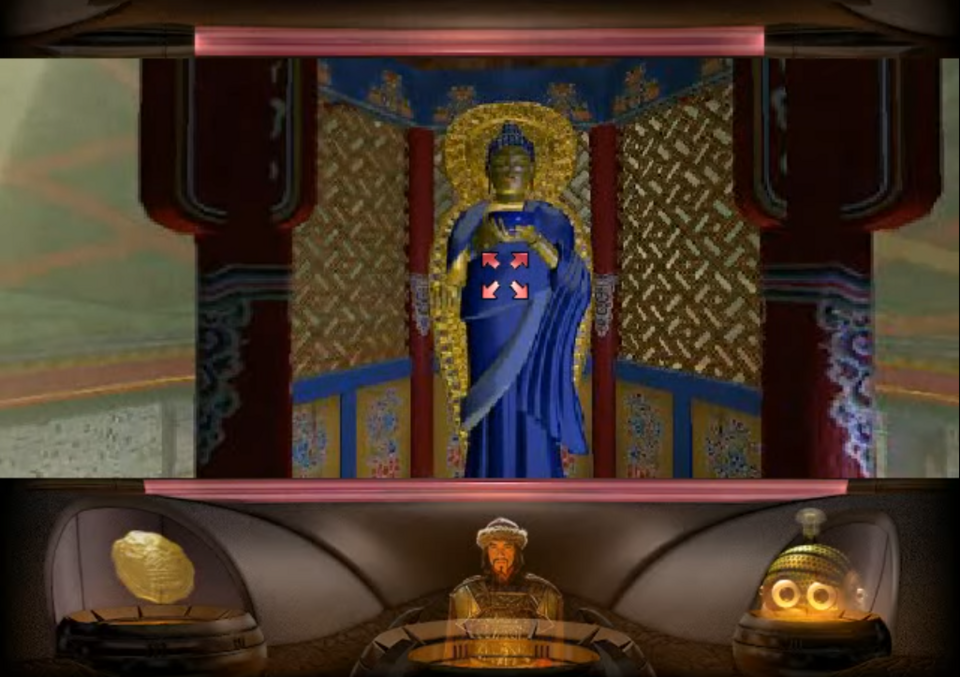
Ascending The Wheel Of Life Temple - [Rating: 2/10] - With the green and black Buddha statues out of the way, you can return to the monastery's other side across the bridge with the Lama. Go back to the white Buddha statue but this time, enter a door leading to an empty temple with a mural on the floor that depicts each Buddha statue. Go down a flight of stairs and approach the enclosure with a white Buddha statue in the center. As you might expect, you need to use the white stone you collected from the other white Buddha statue to make a new set of stairs appear. Continue with this process with each colored statue until you reach the roof of the building. While here, examine a series of murals with Arthur's help.
Finding The Siddha - [Rating: 2/10] - When you reach the top of the Wheel of Life temple, you will find a large spinning lotus vehicle you can enter. This contraption raises you to the ceiling, which allows you to examine a series of murals. More importantly, it will enable you to find a part of the ceiling with a glowing lotus object you can add to your inventory. The second step in examining the Buddhist fresco is the trickiest part. On one of the frescos, you will notice two sparkly eyes, and it turns out these are a magical viewfinder that reveals the legendary Siddha, misspelled in the game as "Sidda," of Shangri-La. This person is the pilgrim you encountered at the start of the game. When you return to this pilgrim, he welcomes you with open arms and hands over an alien artifact when you surrender the lotus piece from the temple.
Andes Mountains - [January 28, 524 A.D. - Second Visit]
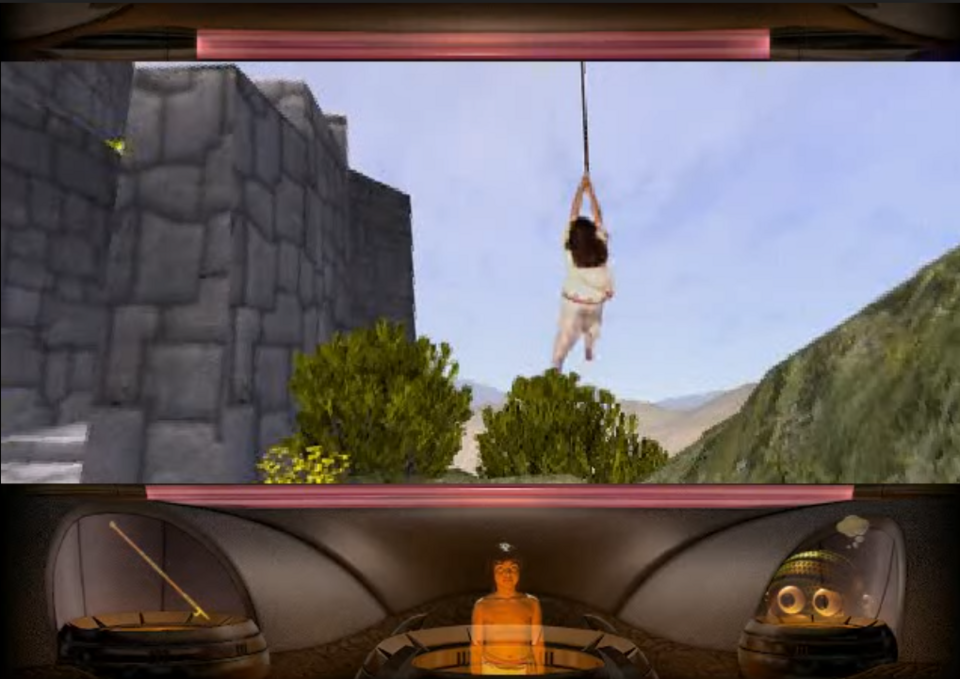
Thwarting The Temple Guard - [Rating: 3/10] - I did warn you that the El Dorado section of the game was the shortest, right? Well, you'll find that this section will be brief in comparison to the previous two because Presto Studios essentially ran out of money when they reached this part of Legacy of Time. Regardless, Arthur saves your position from the last time you visited the Andes Mountains, which most likely means you are in the temple where you collect a sheet of gold next to a muralist. No matter, your main objective in El Dorado is to find a shaman and learn more about where you can find another alien artifact. However, when you attempt to enter the shaman's temple, you'll find it guarded, and regardless of the guise you use, he will continue to block you. It is worth noting that you will require the guise of the child when trying to talk to the shaman, but regardless, the trick to "defeating" the guard is pretty straightforward. From the position you speak to the guard, you can find a secret walkway through some bushes, and if you use the knife from Shangri-La on a rope, you will cause the guard's airship to begin floating away, causing him to chase after it.
There are a few tricky parts to this puzzle worth mentioning. Finding the pathway reminds me of the puzzle in Riven, where the solution involves closing a door and noticing stairwells hiding behind them. This puzzle is the only time the game plays up needing to utilize the 3D movement, and it sticks out as an oddity. Cutting the rope is a bit of a leap because Legacy of Time has been additive rather than destructive with its use of items. When you review the vast majority of puzzles that require item usage, you will notice that you rarely destroy objects. I will discuss this more when I tackle the 2000s "modern adventure era." However, in short, I think games should either split the difference evenly or go all the way in one direction (i.e., destructive vs. additive item use). That better prevents the player from forgetting they can do specific actions in the one or two circumstances that buck the gameplay traditions a game has been signaling. Otherwise, this puzzle with the guard isn't that hard once you get the gist.
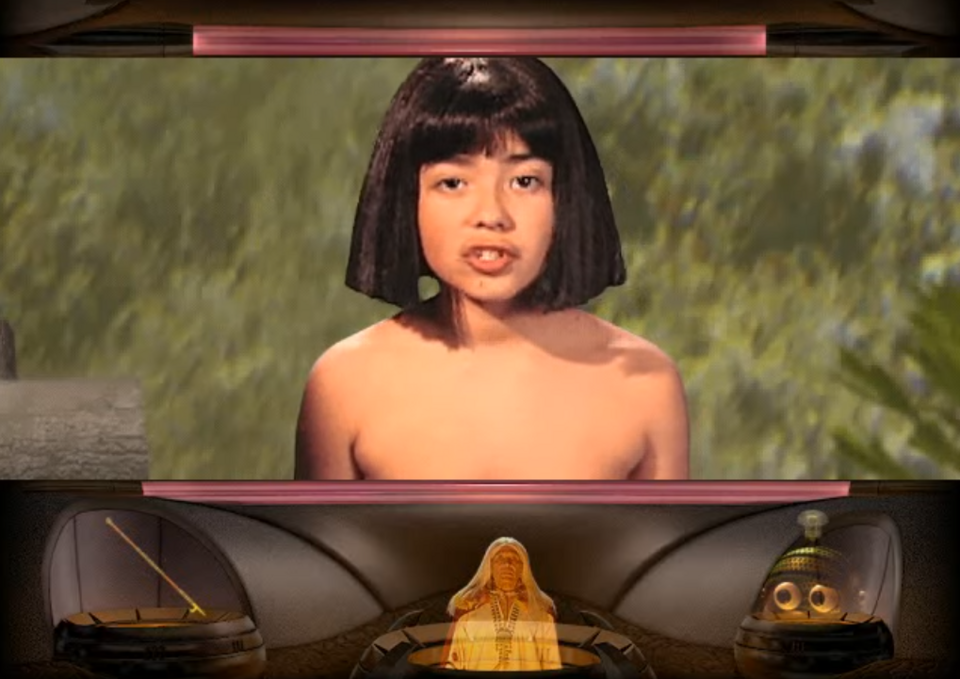
Getting The Talisman - [Rating: 2/10] - With the guard out of commission, you can meet the shaman as long as you are in the guise of the sleeping child. Next is a long, and I mean LONG, dialogue sequence in which the shaman lectures about the child's destiny and an impending disaster that he has seen in a prophecy. The game wants you to fulfill the child's destiny, but the shaman makes mention of a talisman that is required to make that a reality. Luckily for you, Arthur and other NPCs mention that the actual child always has the amulet on his person. If you talk to his father, you discover the object reminds him of his recently departed mother. As such, the kid only parts with the thing if you speak to him in the form of the shaman and tell him it is needed for super secret shaman research. El Dorado is mercifully the smallest environment in Legacy of Time. Still, it is a pain in the ass to navigate due to its hot air balloon ferry system, which takes FOREVER to complete its animations. That point, however, is the only struggle I had with this sequence.
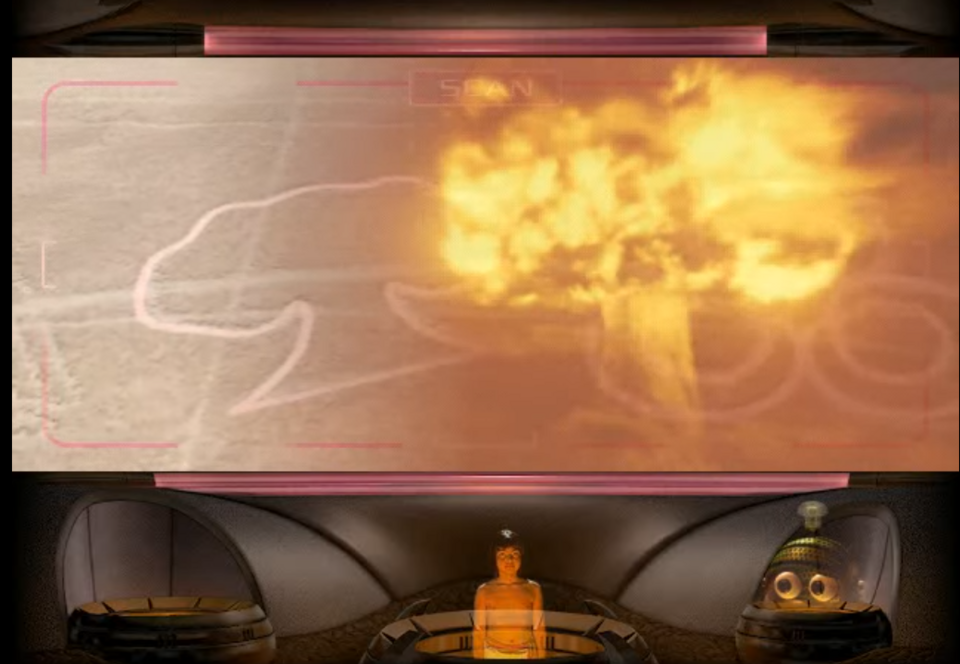
Using A Hot Air Balloon To Find The Hidden Temple - [Rating: 2/10] - You have the talisman but don't know where to use it. To rectify that, you will need to find a hot air balloon next to the shaman's temple that can rise into the sky. To make the balloon rise, you need to use the talisman on a stone in the balloon to light the ignition and make a burner work. While in the sky, there are a few details in the panoramic vista shot of El Dorado you'll need to note. The two most important are the location of the hidden temple where the alien artifact is housed and Nazca Lines that depict four animal shapes on the temple's roof. You will need to note these shapes to complete the next puzzle without additional help. You can skip this step and immediately go to the hidden temple once you pick up the talisman, but I wouldn't recommend it, especially for first playthroughs. First, you will enjoy some gorgeous 90s-era skyboxes when you commandeer the airship, and Arthur has a few fun lectures about the history of Incan culture there as well. Second, the puzzle at the temple with the different rocks affixed to the stone wall is virtually impossible if you skip this part of the game and don't have a guide on standby. Overall, I found this to be a fun and low-stakes puzzle that led to some impressive visual set pieces and fun worldbuilding.
Draining The Pool At The Temple & Summoning The Entrance - [Rating: 4/10] - Once you have had enough of your hot air balloon tour, you can descend by clicking the burner to switch off the ignition. When you reach the ground, you trace your way back to the temple with the artist, but this time move to the right and forward until you notice a hidden pathway concealed behind some shrubbery. As you continue forward, you'll see the temple is flooded, but the solution to this problem is simple. The water pool drains when you place the talisman into a receptacle in front of you. However, the door to the arrowhead temple's inner chamber remains closed. To unlock this door, you'll need to find four sets of six animal stones jutting out of the stone pool's walls. Each of these sets coincides with a cardinal direction that you need to match with the animal shapes you saw on the temple's roof while piloting the hot air balloon. The game informs you when you select the correct stone when its eyes turn red. I will say, the textures on the rocks are not great, and there were times when I struggled to discern what animal a rock was attempting to depict. Also, the puzzle resets your progress when you make even one incorrect selection. The good news is that this part of the game is not randomized. If you get stuck, you can always look up the answer in a guide, but the game also provides all of the tools necessary for you to solve it naturally.
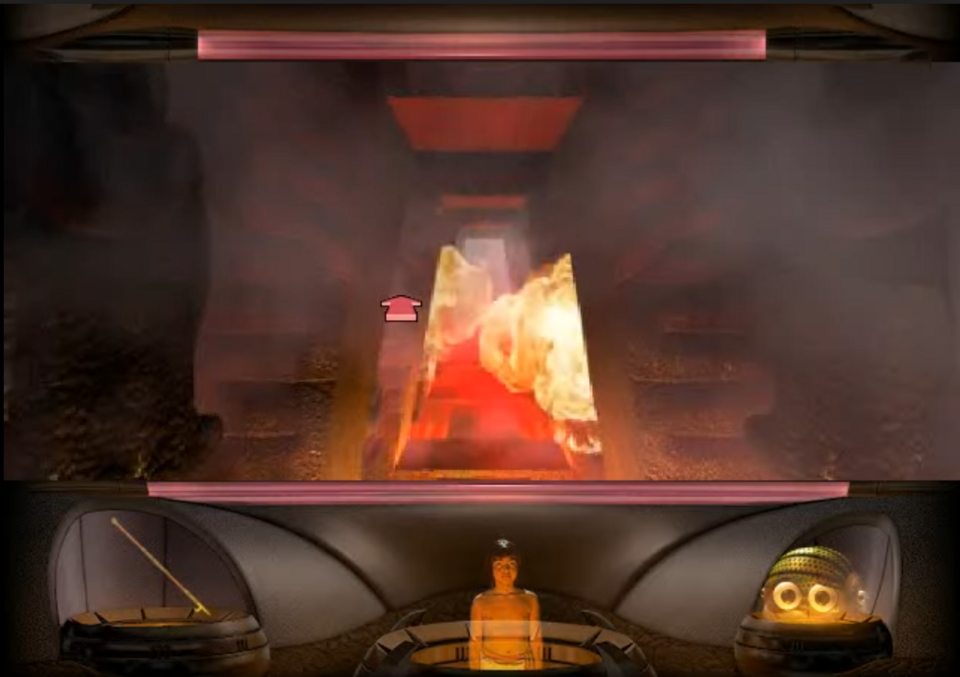
Putting Out The Flames In The Temple - [Rating: 2/10] - When you find the winning combination of stone shapes, the door to the temple opens, but you quickly realize it has dozens of fire traps that make entering hazardous. To highlight how much this game differs from its predecessors, Legacy of Time does not subject you to a platforming or timing puzzle that dolls out "Game Over" screens like its life depends on it. Instead, it prevents you from entering the temple and forces you to find a different solution. That solution involves going back to the temple entrance, lifting the talisman, and using the water to extinguish the fire traps. You can then enter the temple and pick up the alien artifact without issue. This is a fun puzzle that requires ingenuity, and I loved it. Also, the movie sequence that plays after you pick up this artifact is AMAZING!
TSA H.Q.
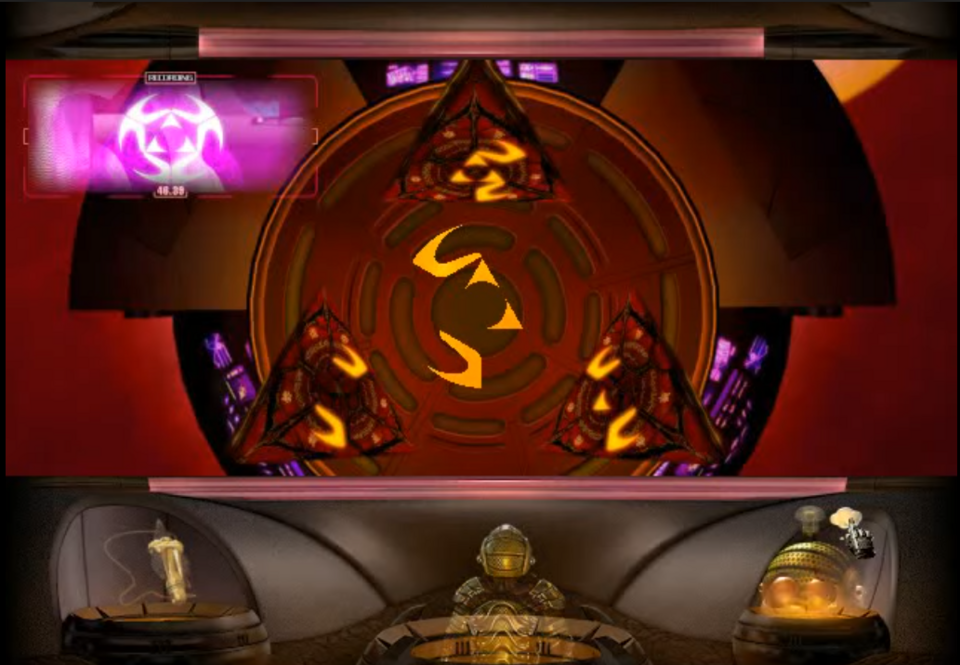
Constructing The Sosiqui Legacy - [Rating: 7/10] - Back in the TSA labs, the aliens responsible for destroying the legendary cities you visited appear and demand (ala Men in Black 1) that you present them with their "Legacy" or else risk the destruction of humanity. To appease these wonton alien invaders, your team pieces together the three artifacts but are disappointed that the shapes on the fully assembled object are not in the correct order. What ensues next is a sci-fi 3D Rubik's Cube puzzle! You swap pieces on each side until you get the correct symbols to show up on that given side! And that's it. The LAST PUZZLE IN THIS GAME IS A GODDAMN RUBIK'S CUBE! I wish I were joking.
Now, there's more to this puzzle than you playing around with a Rubik's Cube. Arthur, for example, relays that if two projections match between two sides, then they will cancel out each other and make a shape or symbol disappear. Likewise, you change the images on the pyramid by spinning the entire object or by clicking the face of a side to manipulate one piece. Nonetheless, your experience with this puzzle depends on your feelings about Rubik's Cubes. If you can solve them by doing some simple math in your head, you will have no trouble, and the added complications will be nothing. However, this will not be fun if you have never solved a Rubik's Cube. It's also a lazy and disappointing end to an otherwise creative, action-packed adventure.
Should You Play The Journeyman Project 3: Legacy of Time? (Verdict: If You Are In This Deep, You Owe It To Yourself To Play This One)
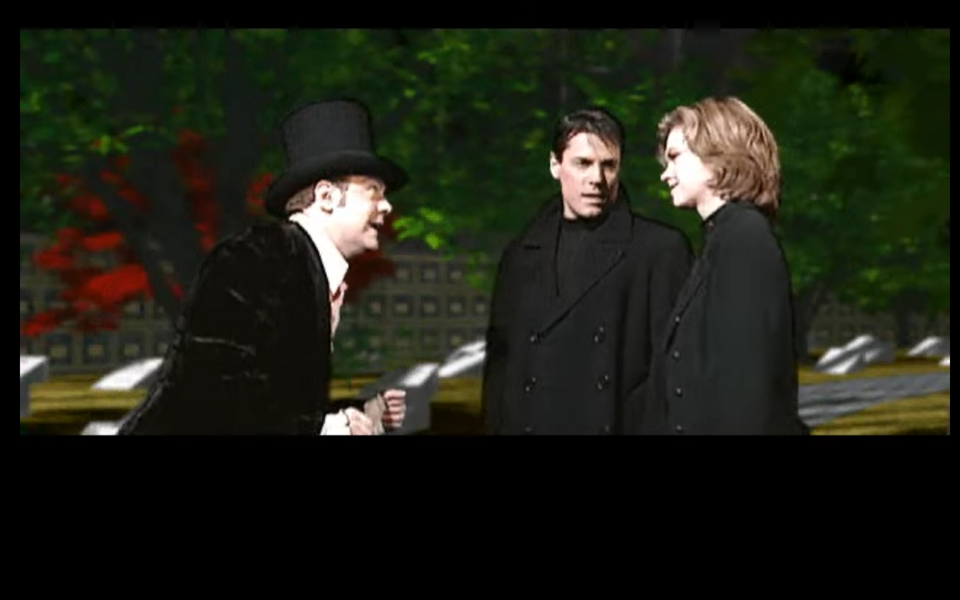
What a journey this has been. When I first played Pegasus Prime as part of a charity stream, I had no idea I would see the entire Journeyman Project series out to the end. It's a unique hallmark of the FMV era of adventure games and a relatively unknown franchise despite having an indelible mark on the genre for the better of a decade. Legacy of Time is the best playing and most ambitious of these titles as it aims for the stars at every turn. While the first game and Buried in Time are more complete experiences, their punishing difficulty makes them challenging to recommend, especially with their rougher edges. Legacy of Time is a delightful stroll compared to Buried in Time's marathon or the first game's 100 m sprint. You don't have to worry about needing to save after every other step to avert losing progress due to malicious "Game Over" screens. In Legacy of Time, you can absorb its scenery without fear of reprisal.
Unfortunately, no one is reviving The Journeyman Project series. Presto Studios went bankrupt years ago, and most of the figureheads that made the heights of the franchise possible left the industry. It is a damn shame The Journeyman Project lives in relative obscurity as its peers continue to get crowdfunded revivals. When I look at the treasure trove of adventure games that have come out thanks to Kickstarter alone, I cannot help but feel bummed out that The Journeyman Project 4 died so Presto could make Myst III: Exile and I say that as a complete Myst apologist.
Finally, I cannot stop thinking about what this game lacks and its many visible pitfalls. The fiddly interface is "of an era." The occasional challenging puzzle here and there is something I can handle because that is a facet of the adventure game genre. The over-the-top FMV cutscenes were an absolute delight for me, but they are not for everyone. But it is how the game ends just as it feels as if it has found its stride that smarts the most. As I said in the first entry, Atlantis is the only level that feels like a "whole" environment because El Dorado is painfully half complete. Shangri-La's corner-cutting is immediately apparent when you discover half your time there is spent looking at the same repeating underground tunnel textures. And while I consider this game the best entry in the franchise, I cannot recommend you skip the previous two to reach this game. So, who can I recommend this game to at the end of the day? Honestly, it is to the handful of people that are fans of the point-and-click genre and are up for the long, wild, and sometimes laborious adventure every single one of these games provides. Presto Studios killed this series when Ubisoft assigned them to work on Myst III, and that's a shame because they had something original in their catalog that had the potential to rival Myst as it started to creak with age. And if you are up for three wildly ambitious FMV experiences, then I cannot imagine you'll be disappointed by what this series provides.


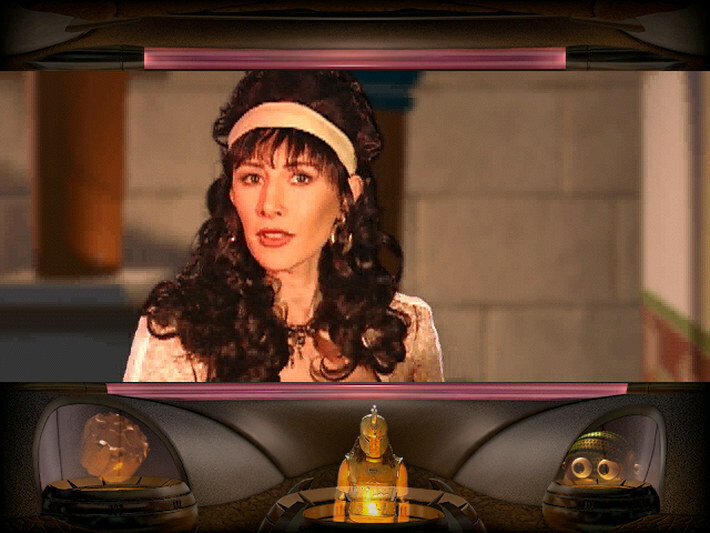
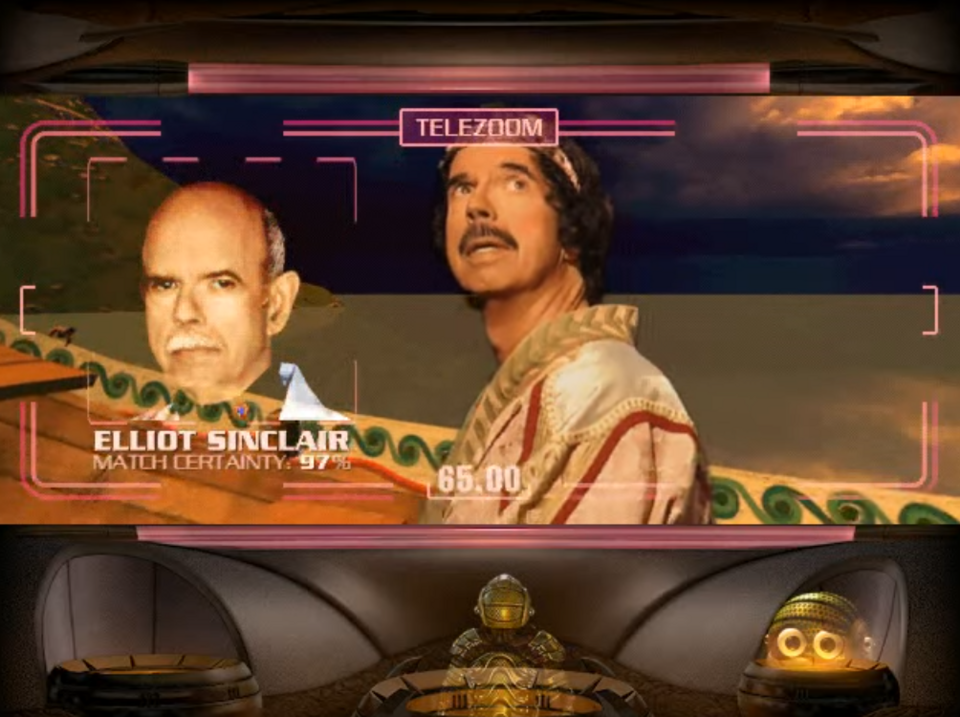
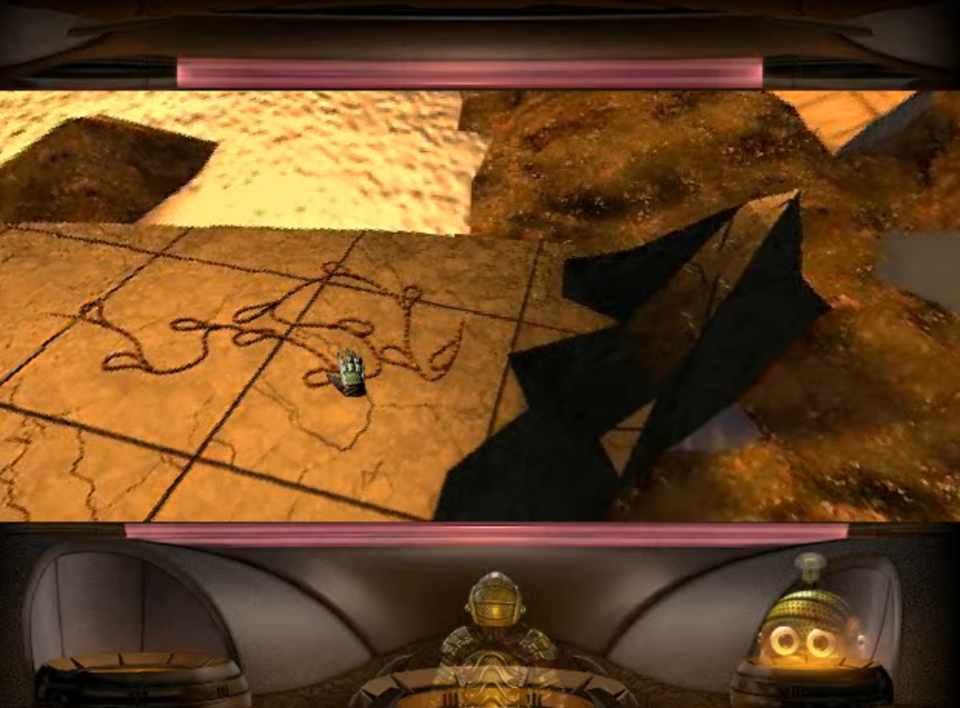
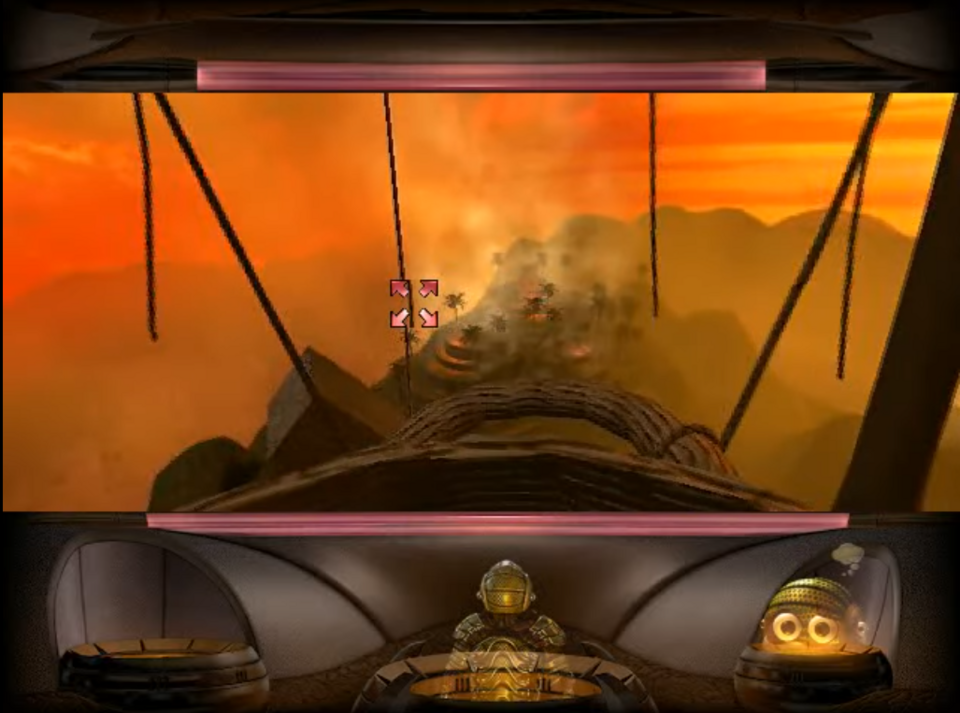
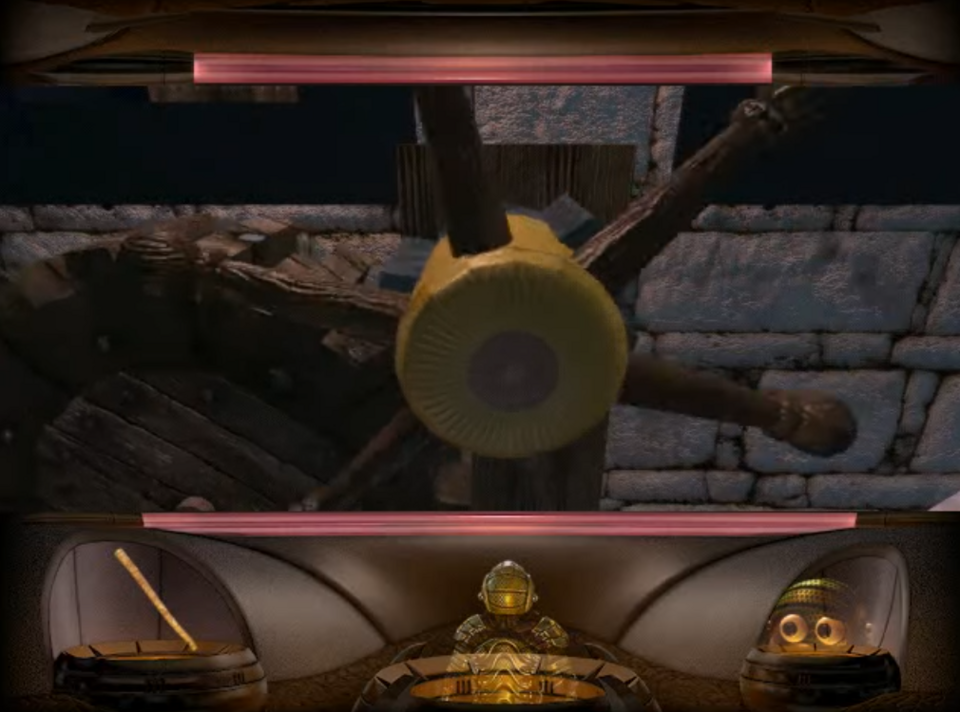
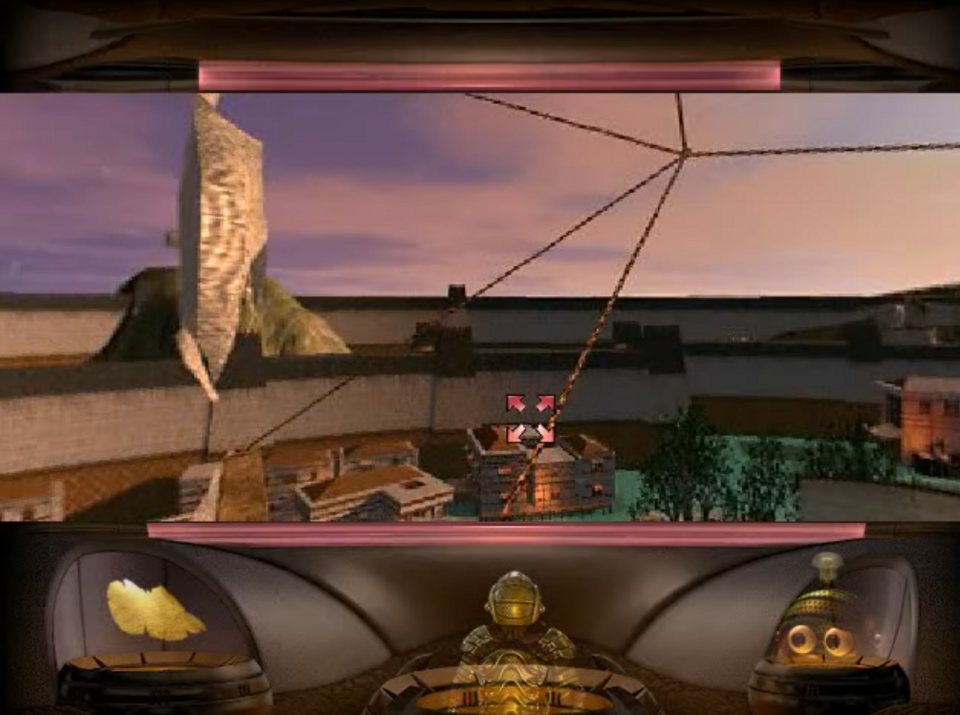
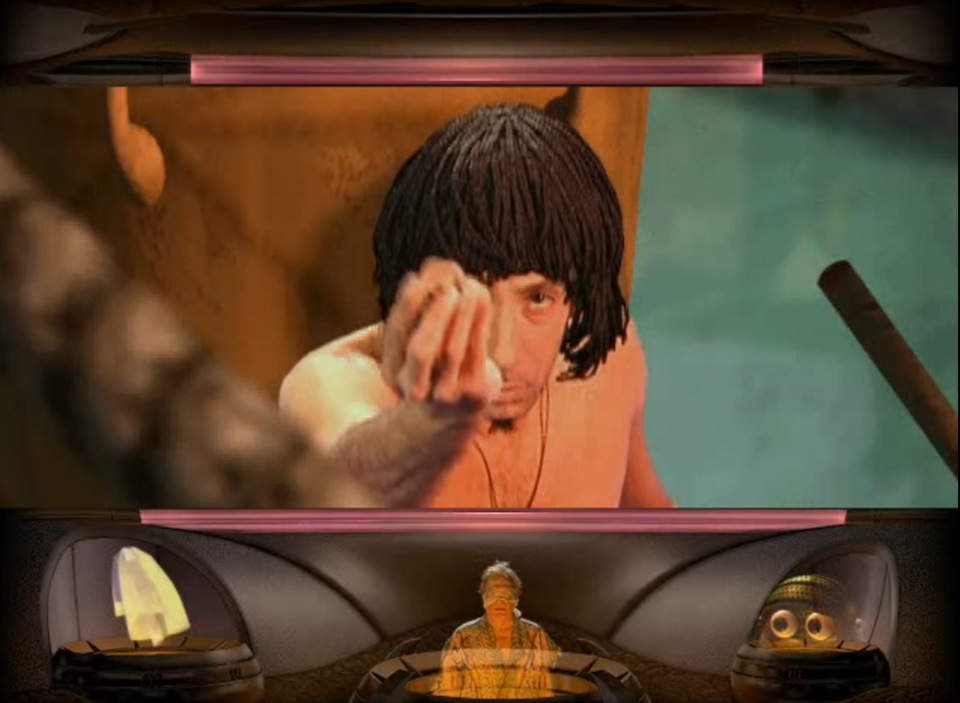
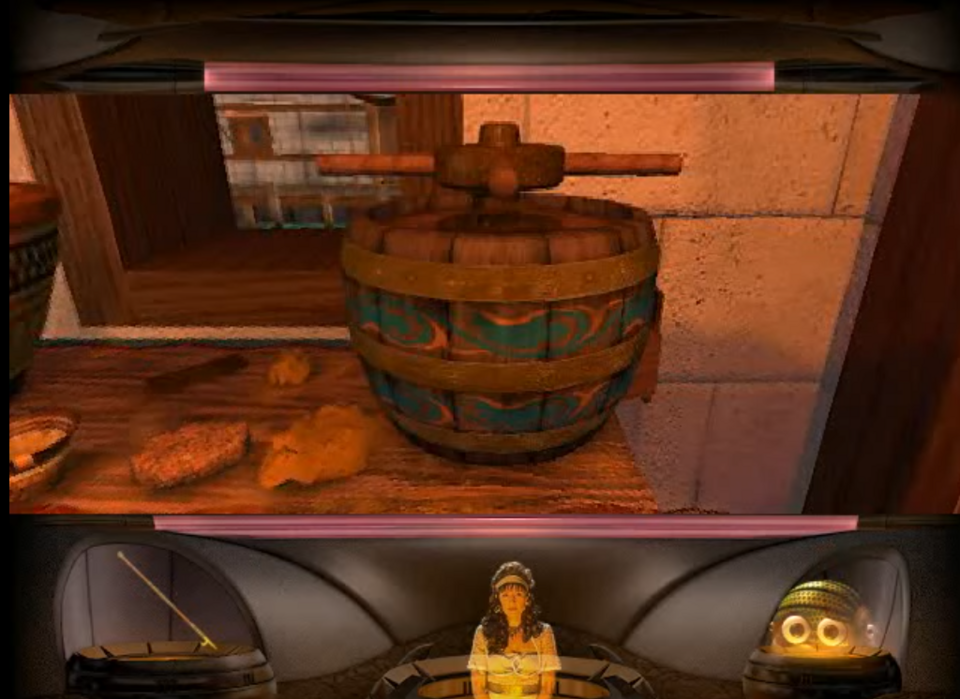
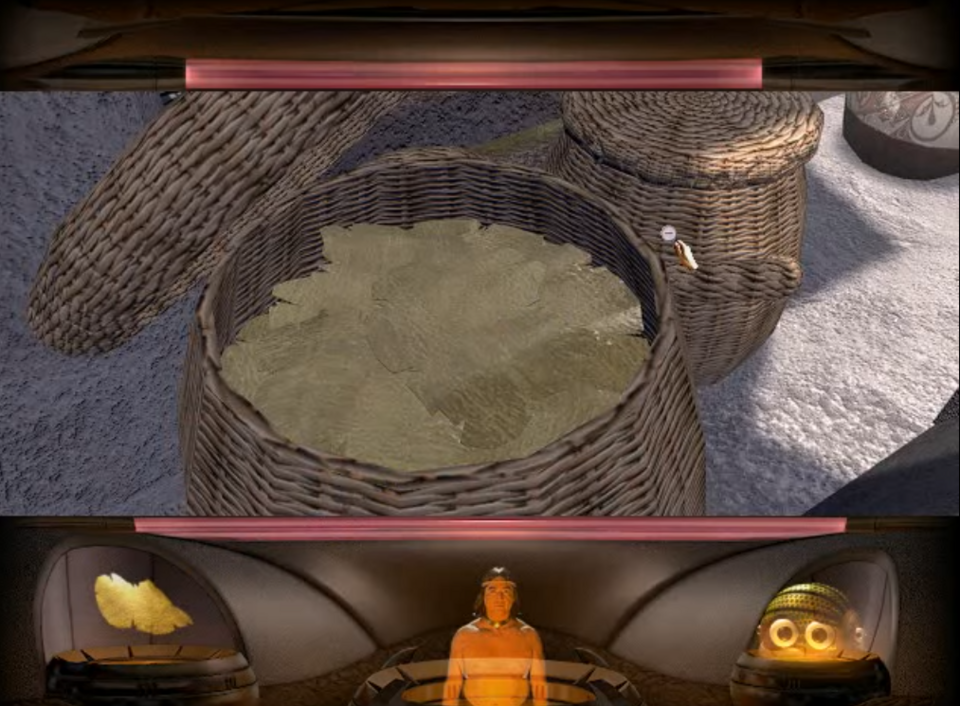
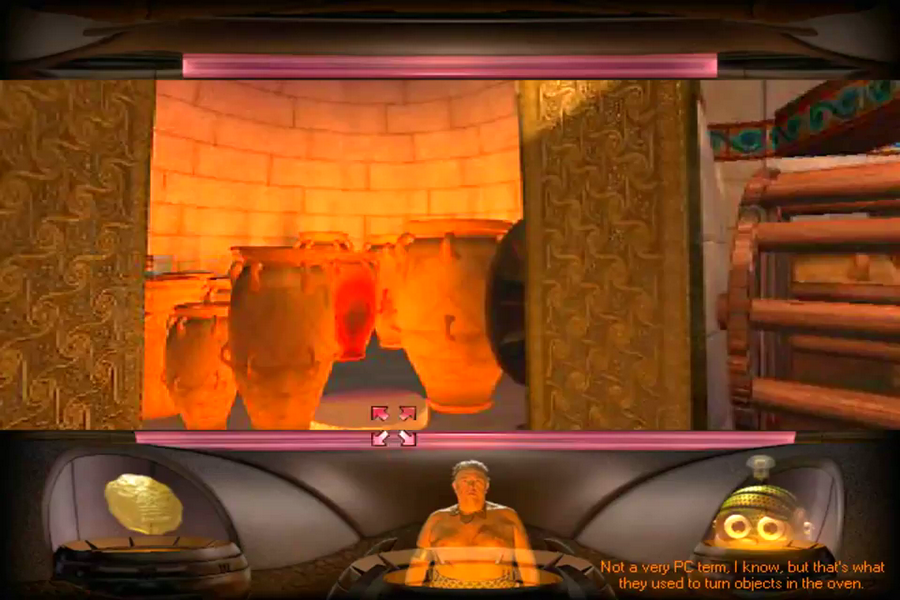
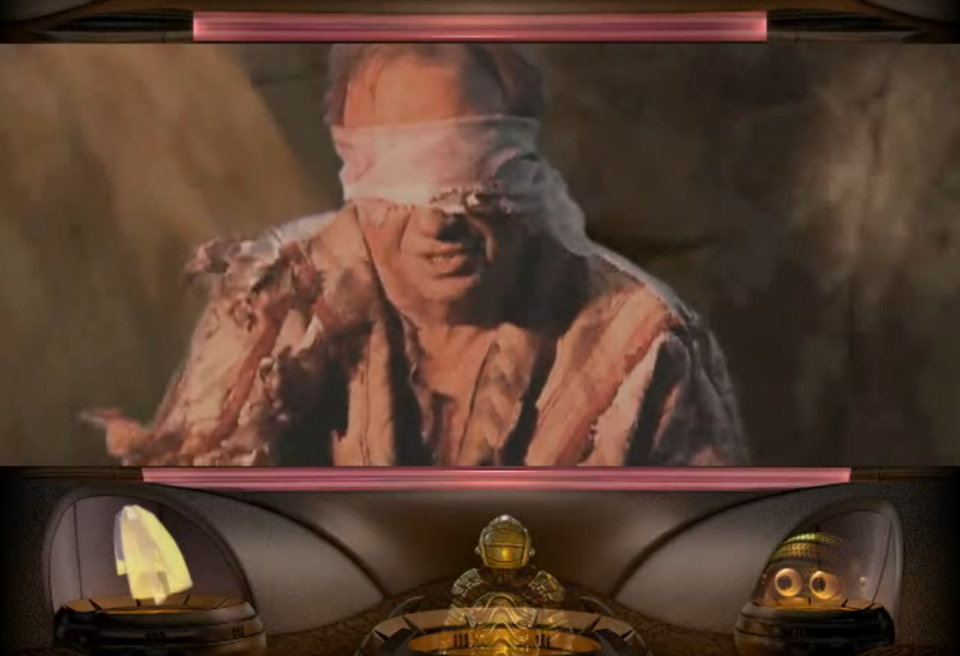
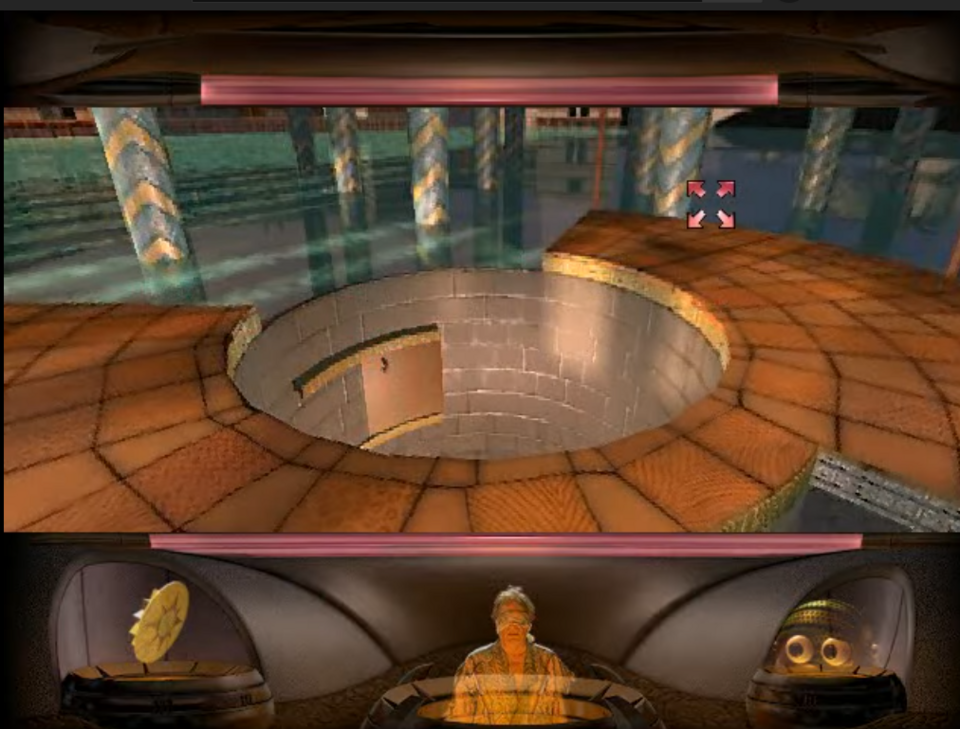
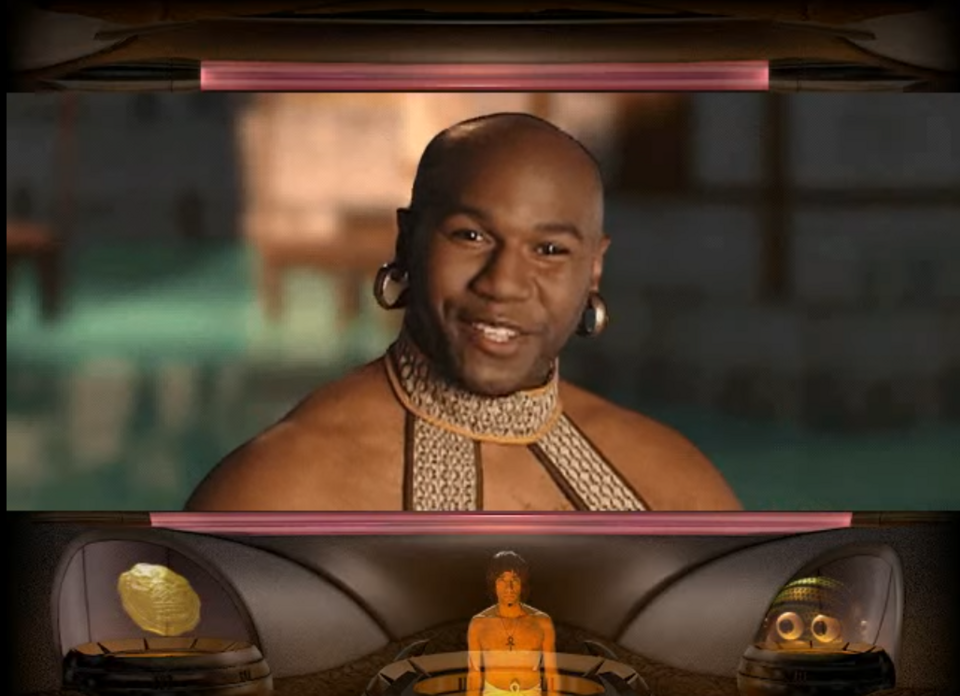
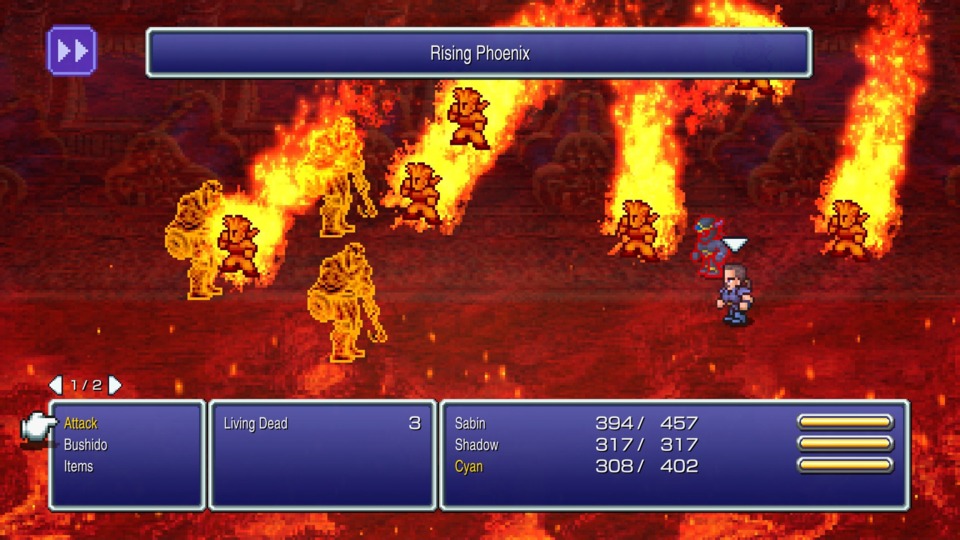
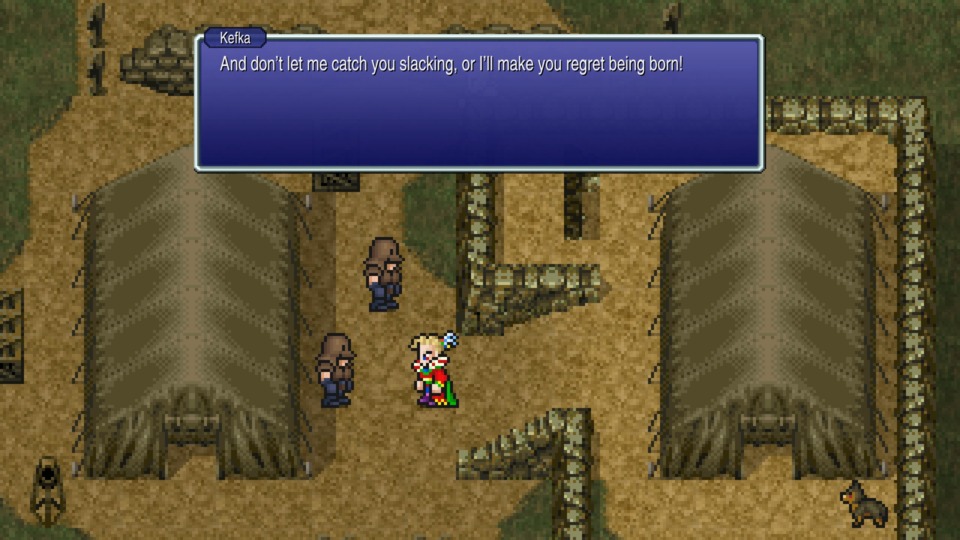
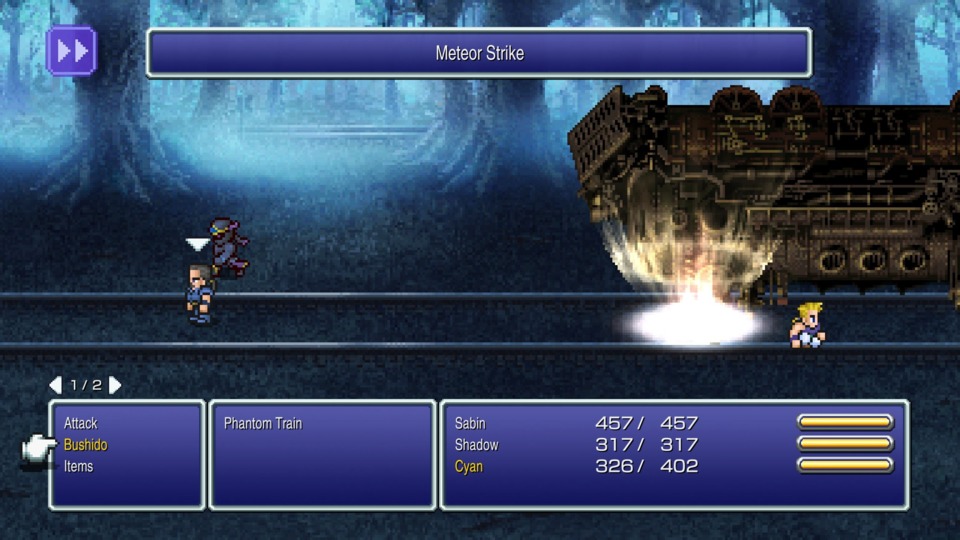
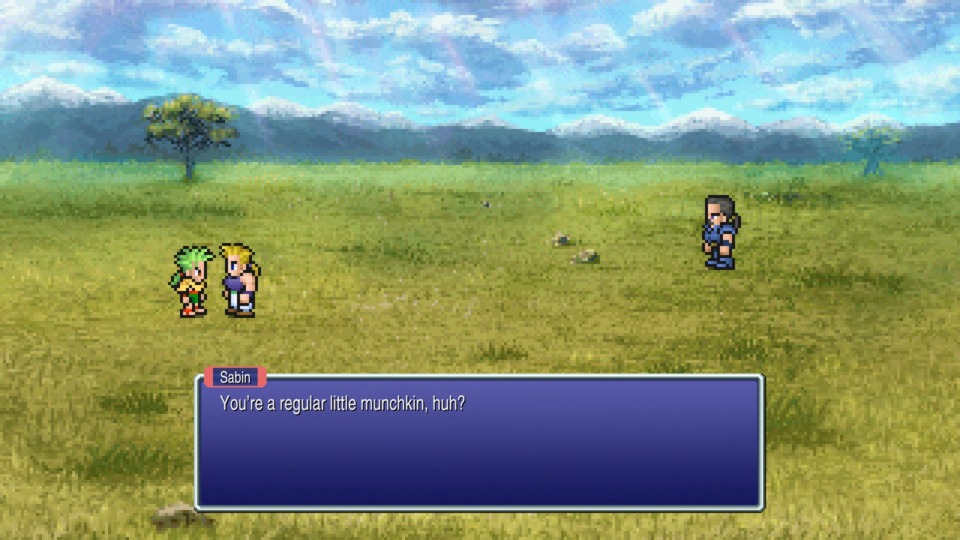
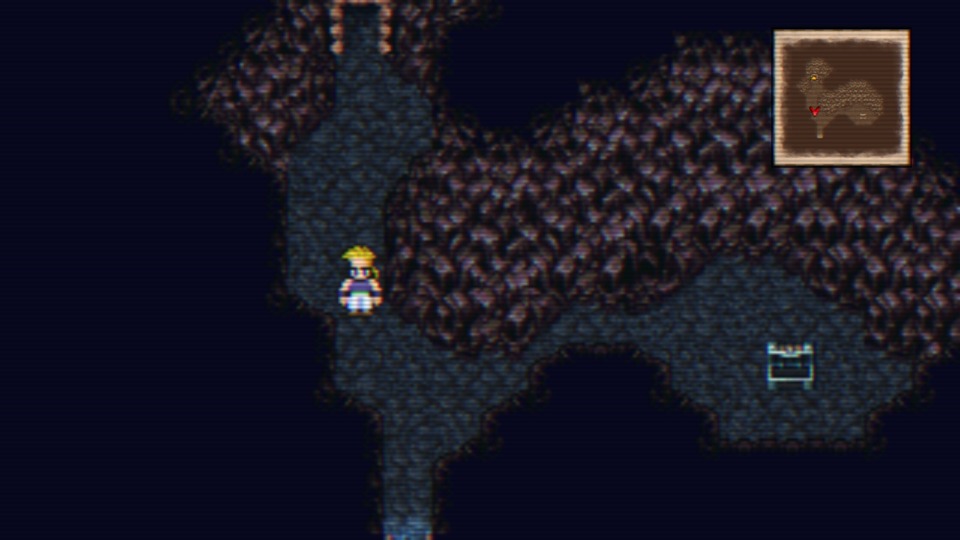
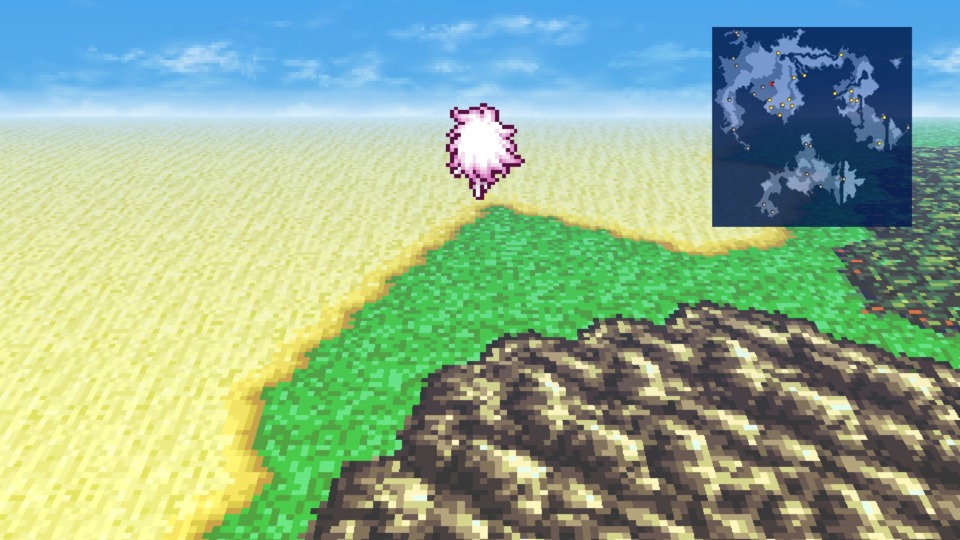
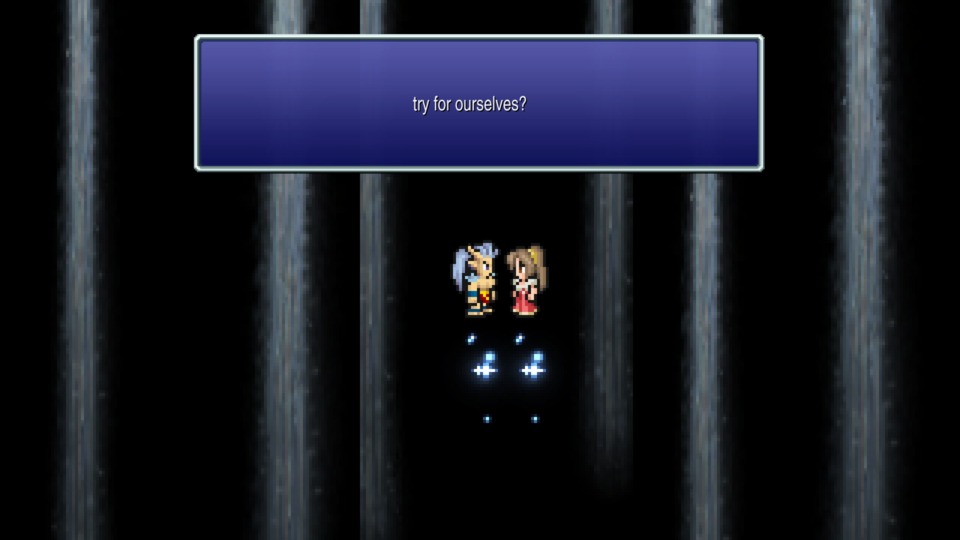
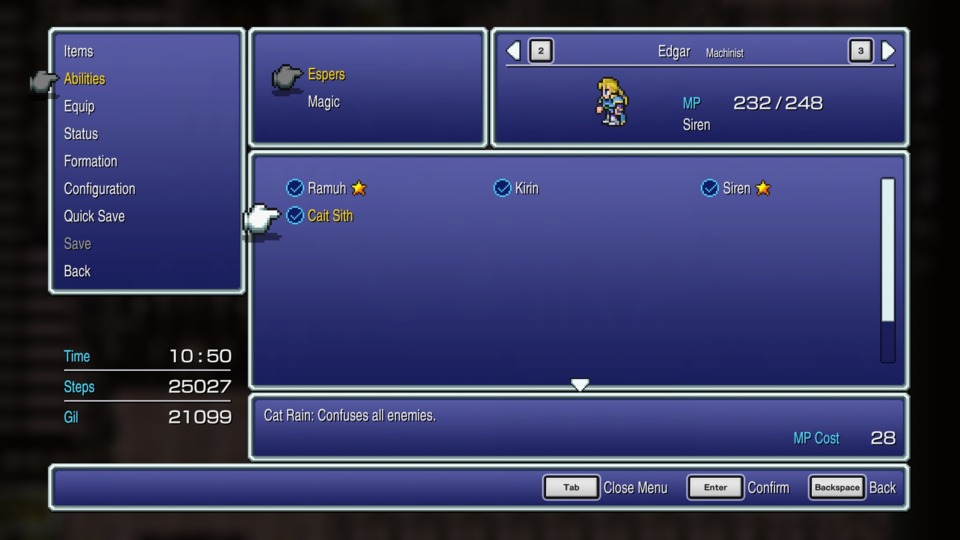
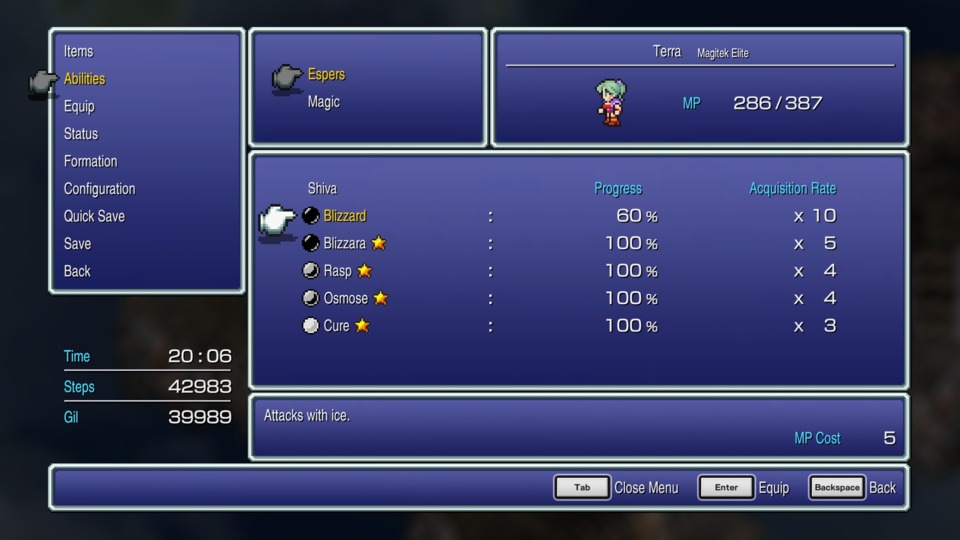
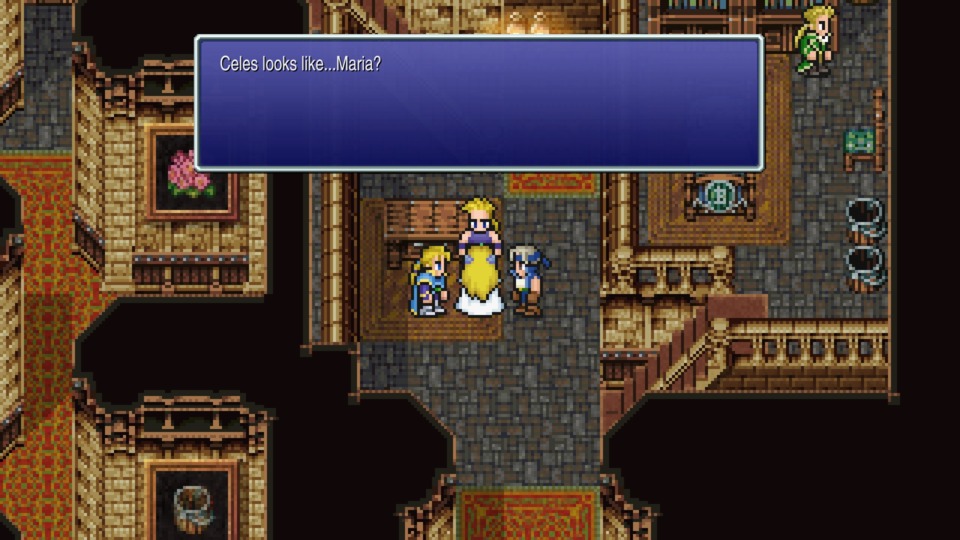
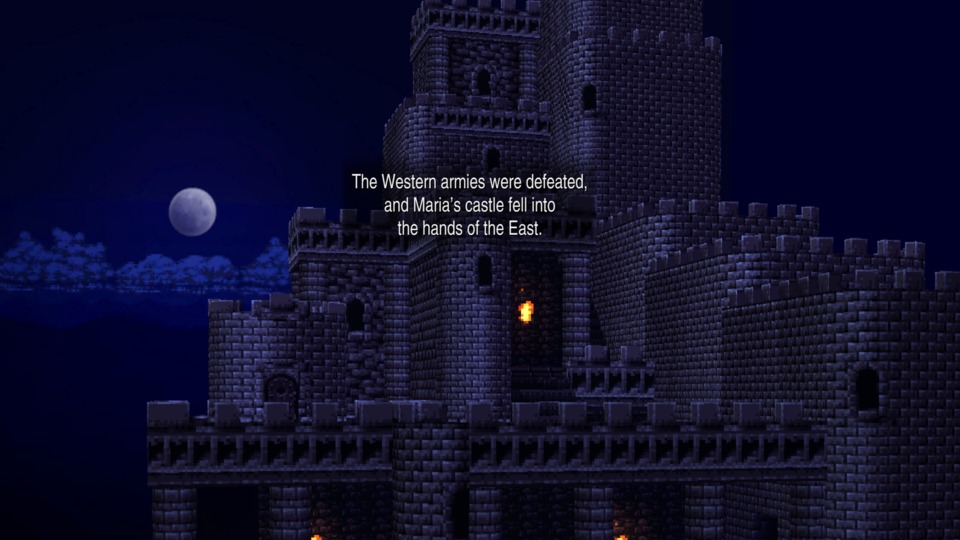
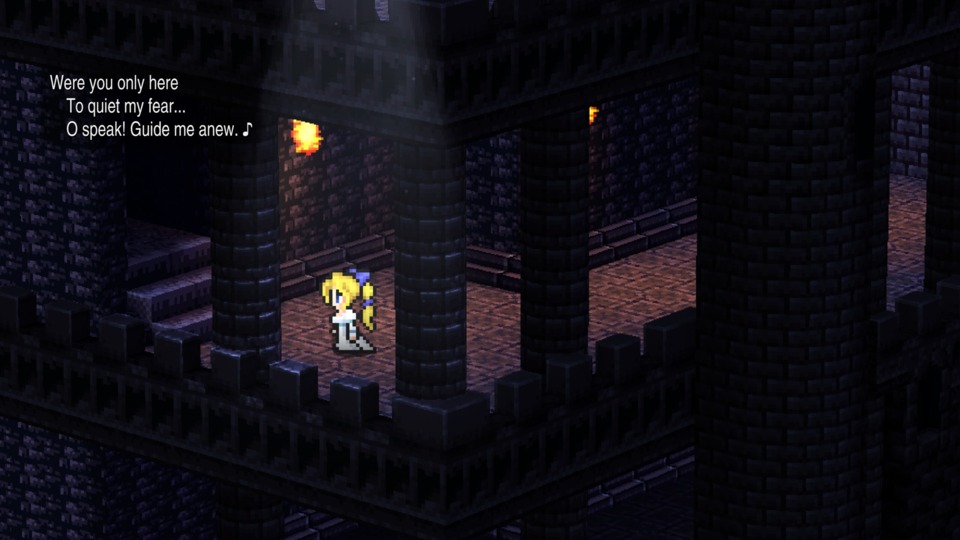
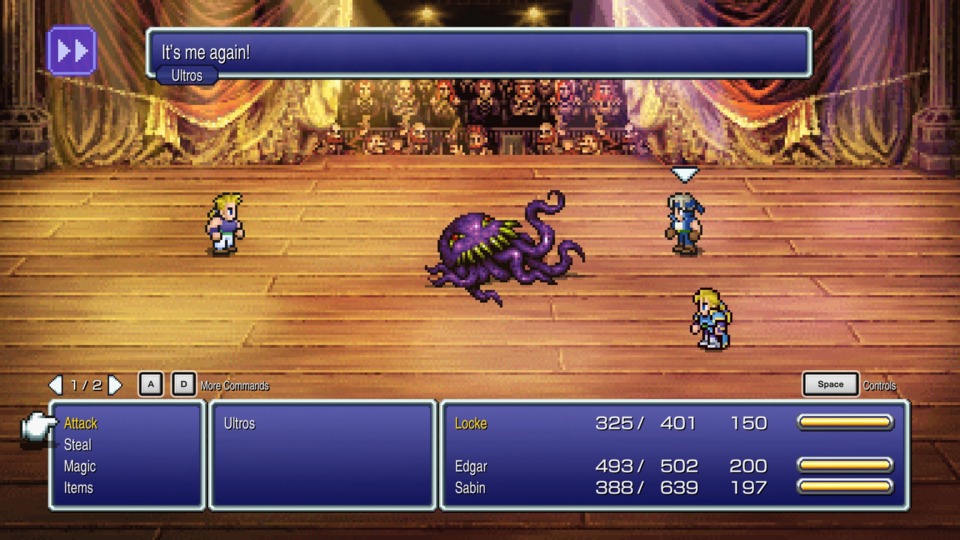
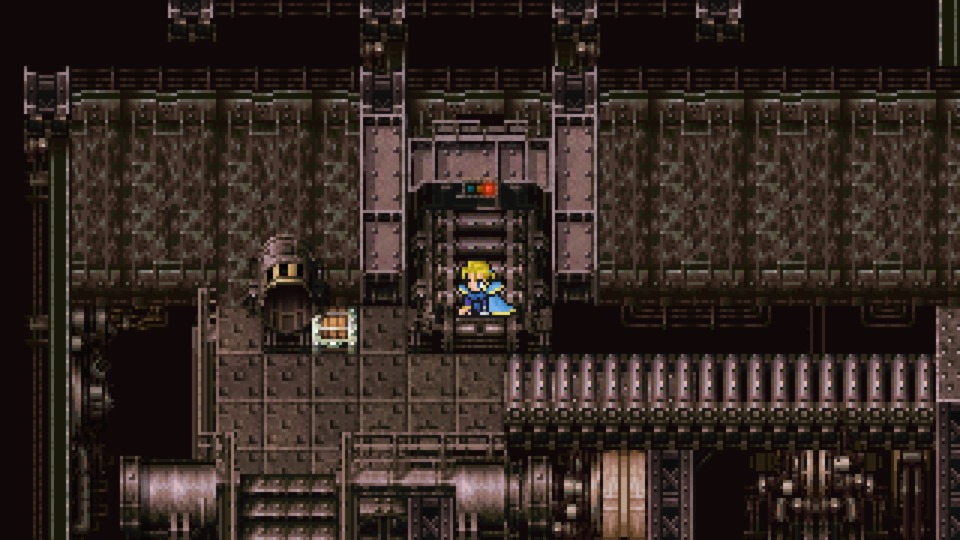
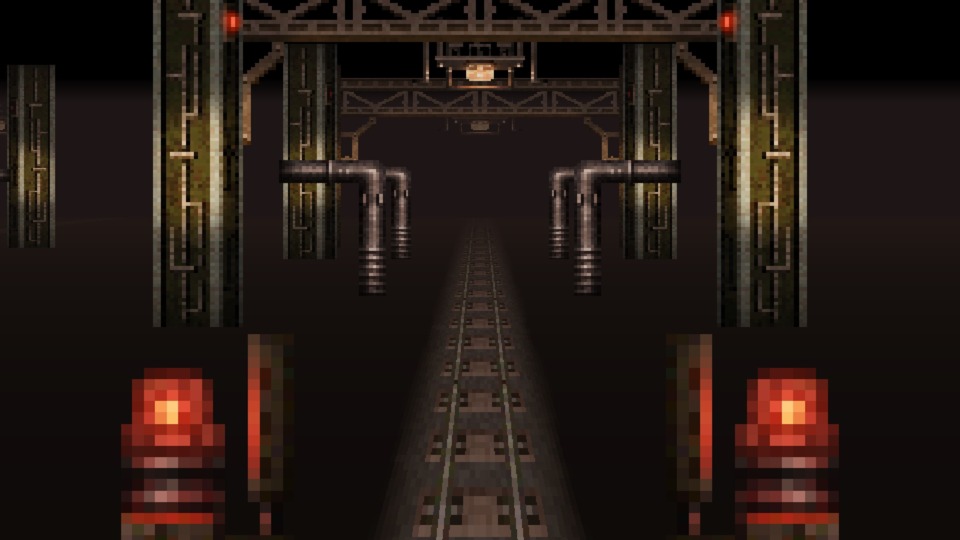
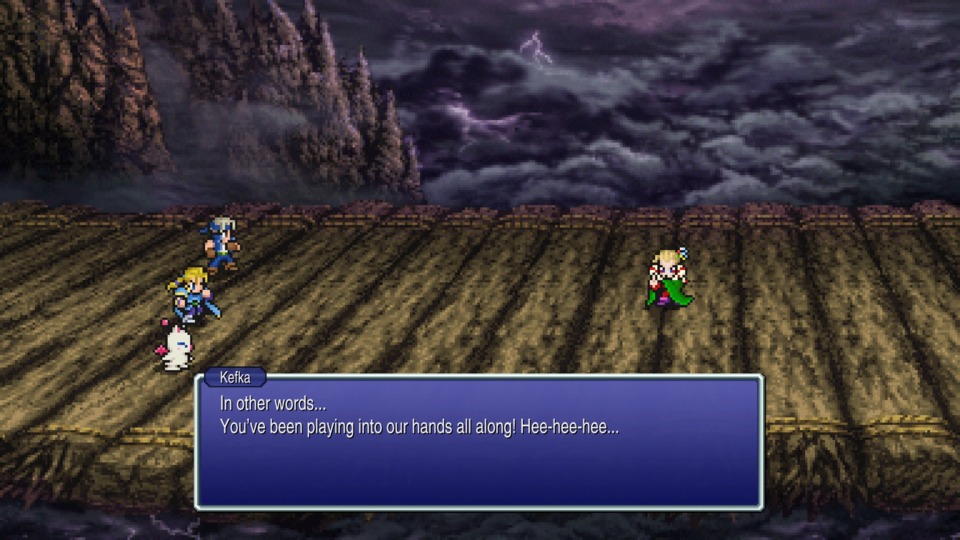



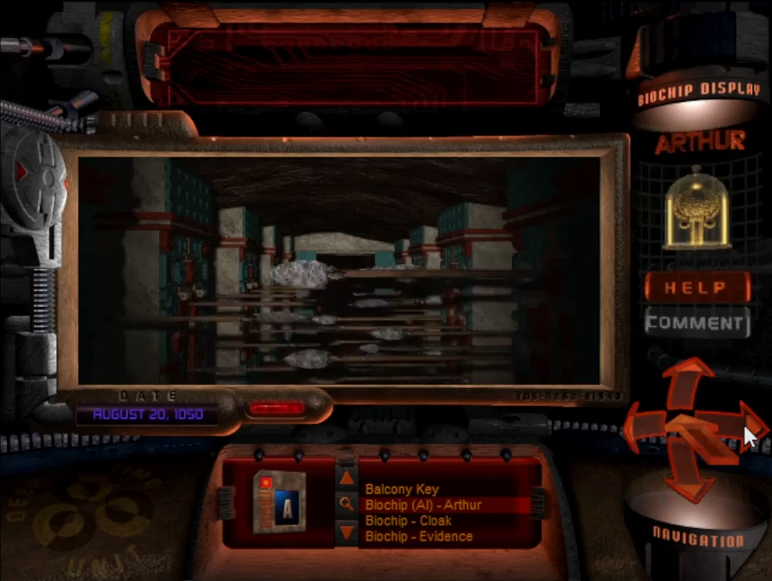
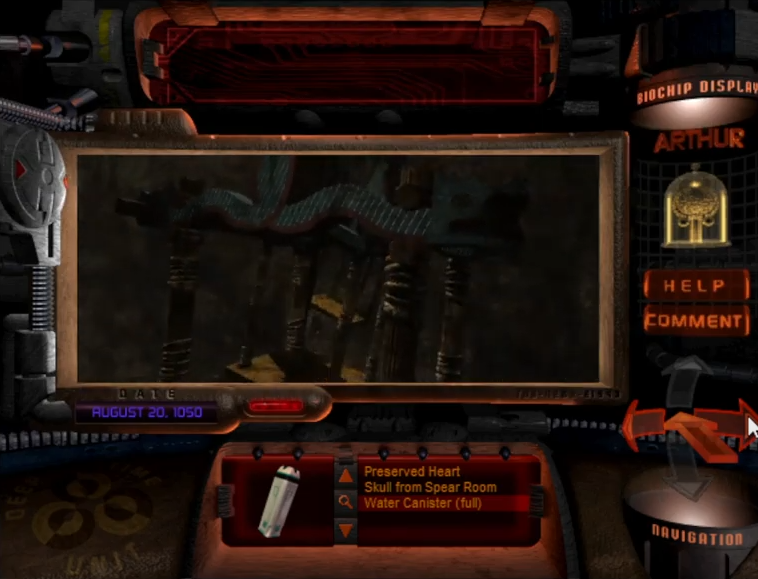

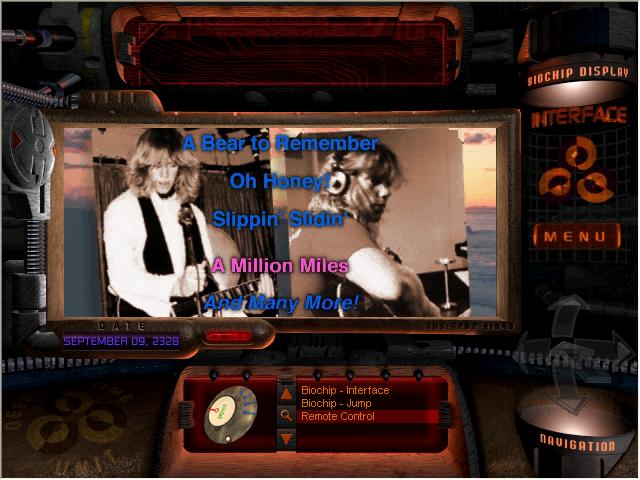

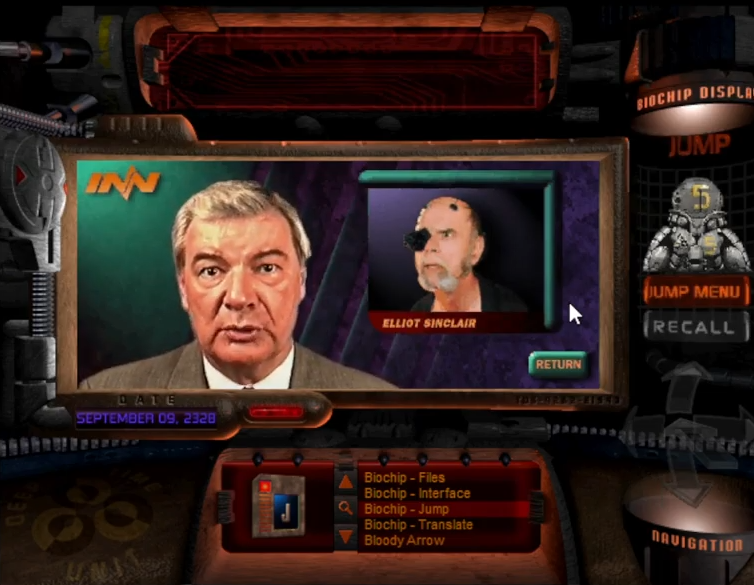
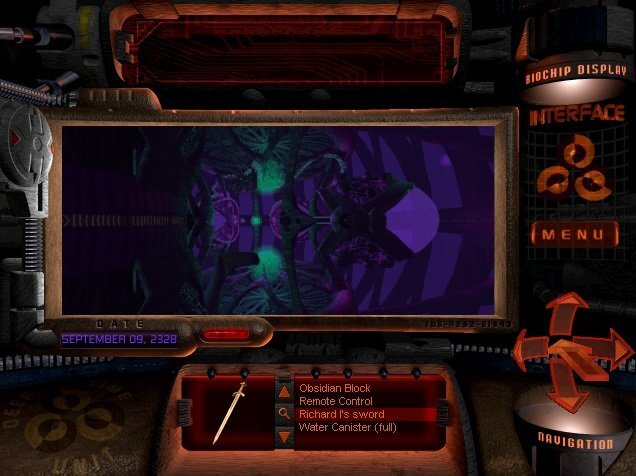
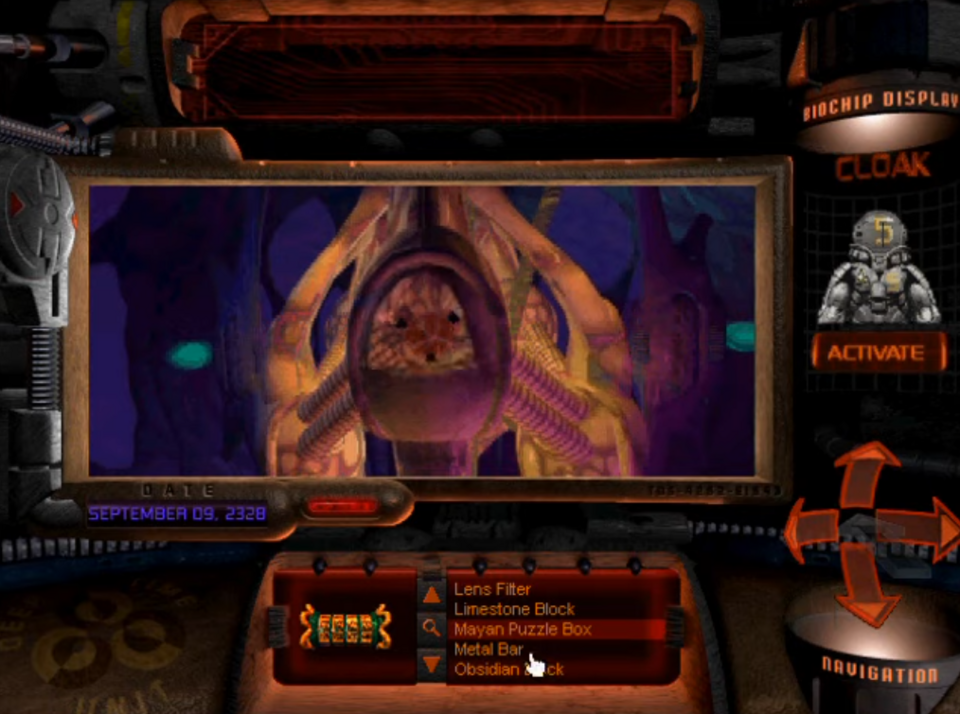
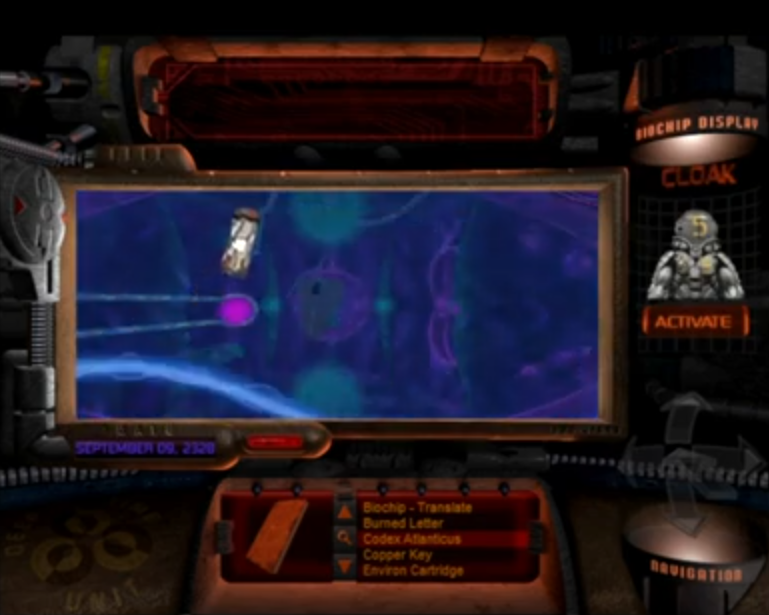
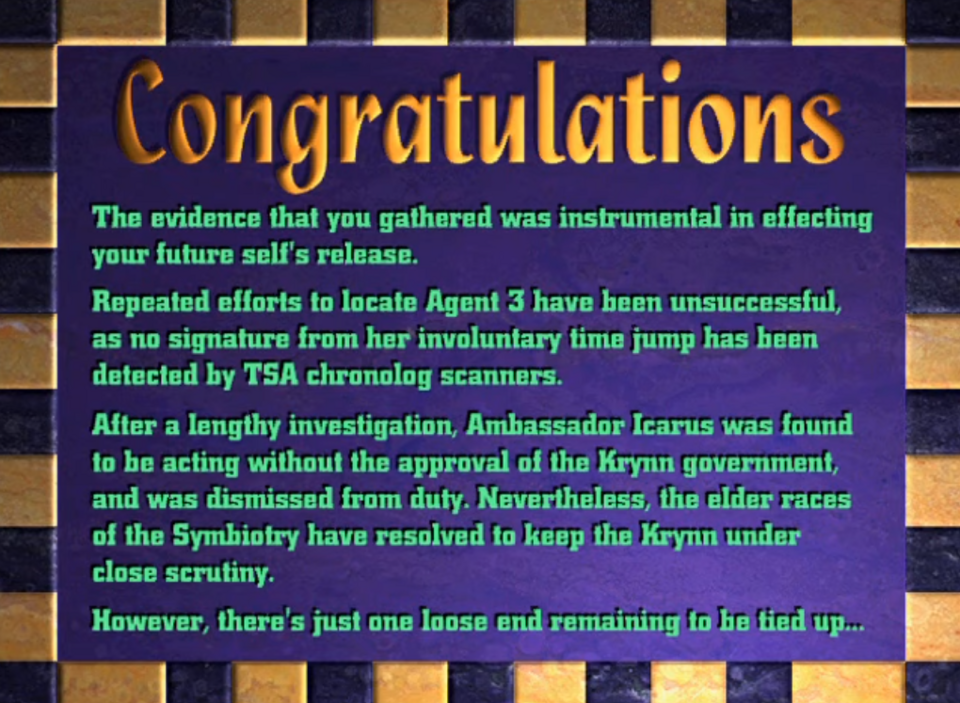

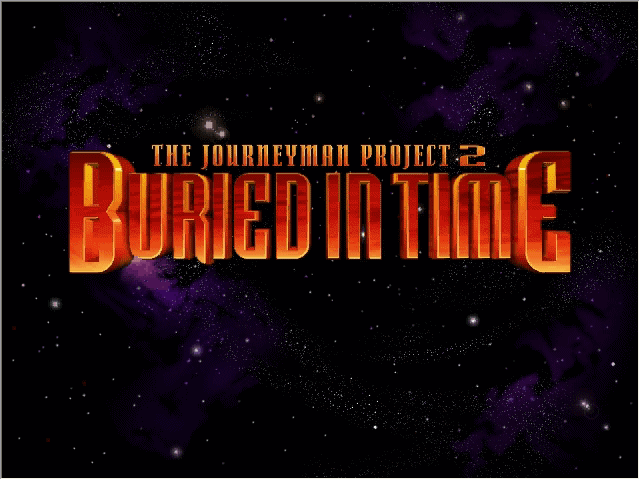
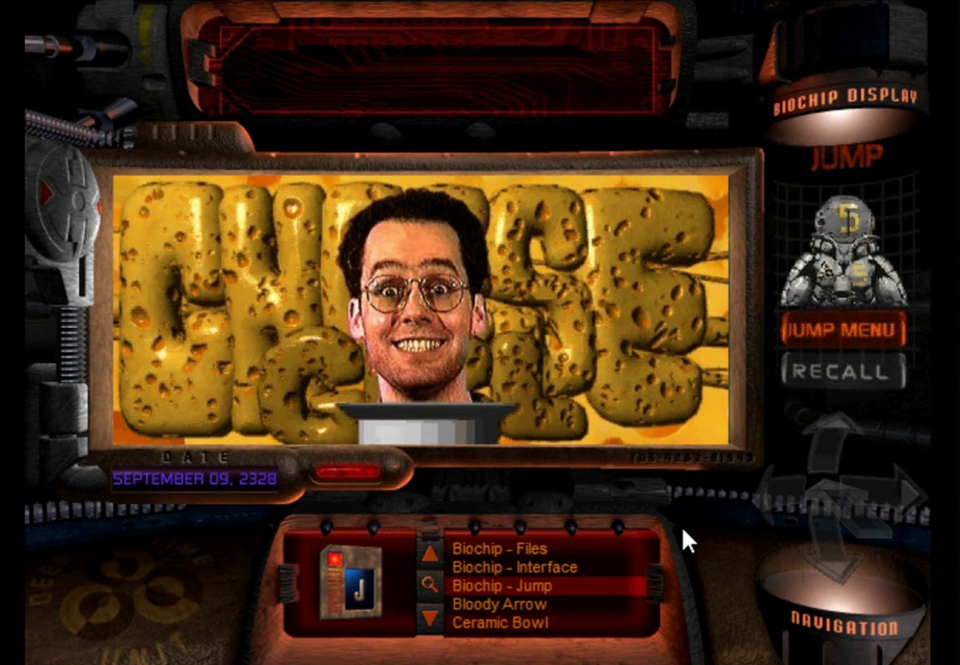
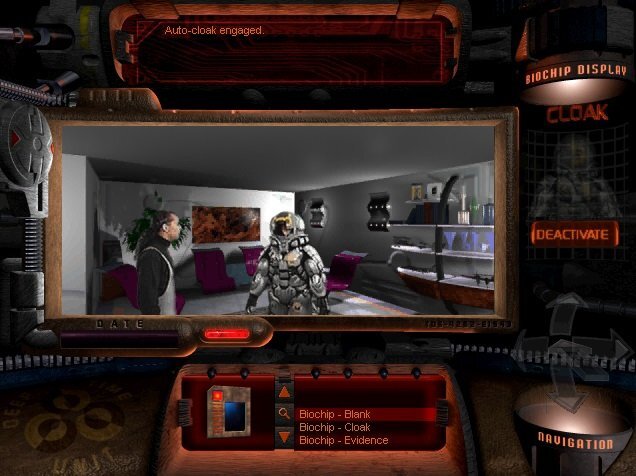
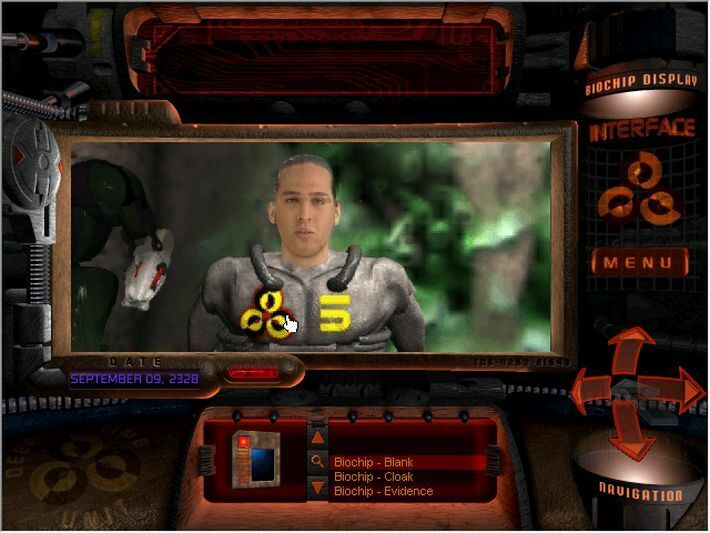
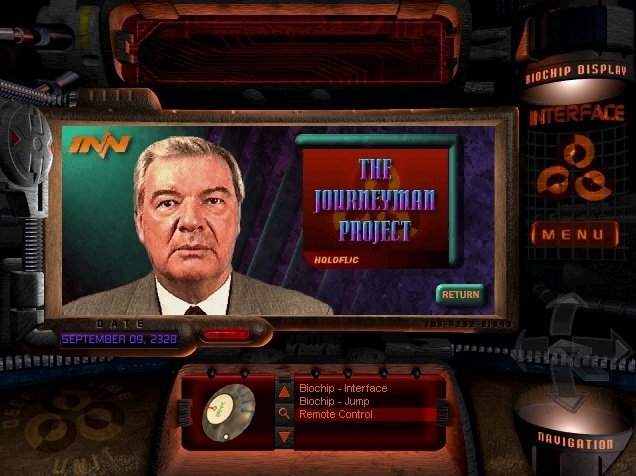
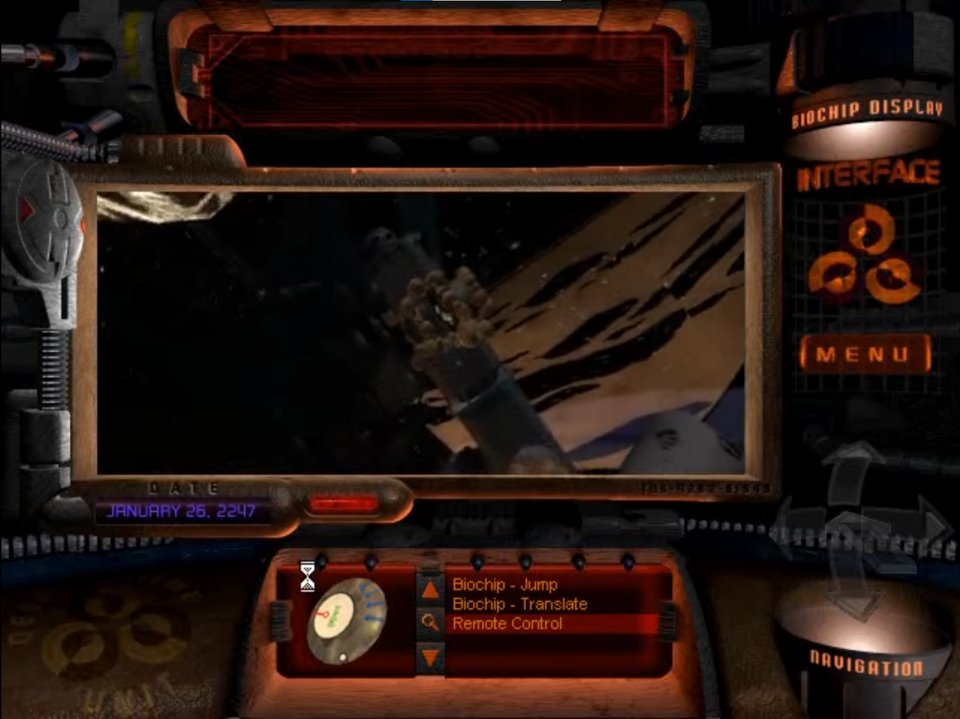
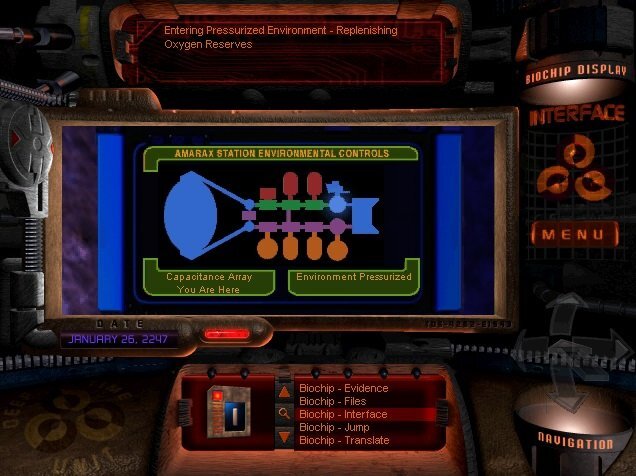
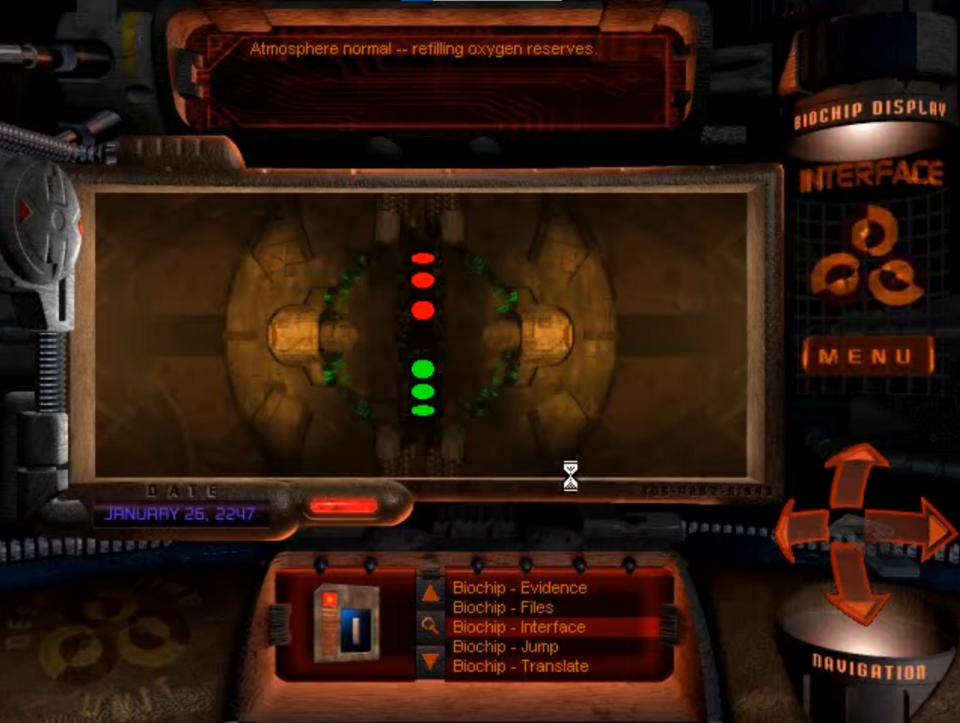
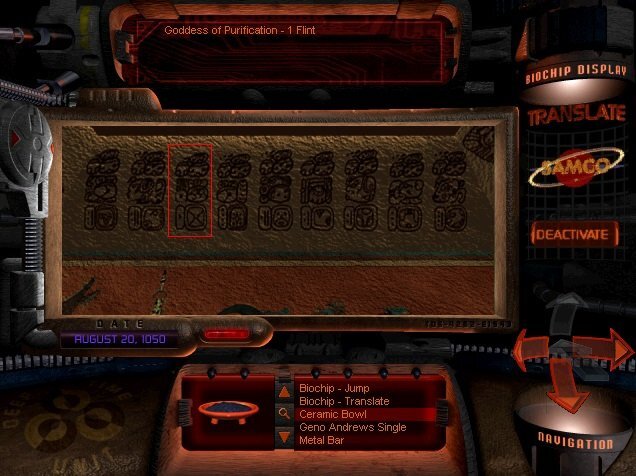
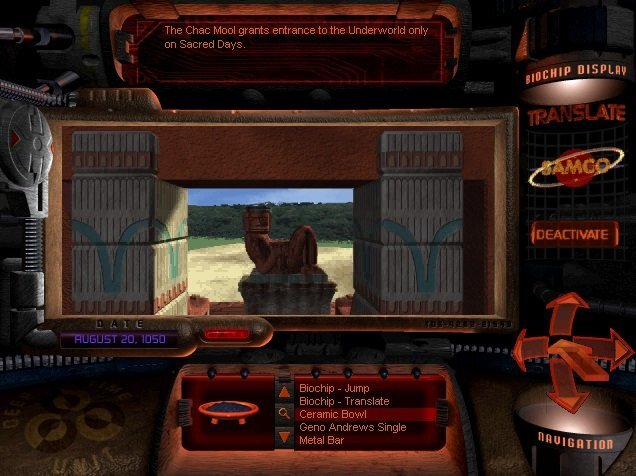
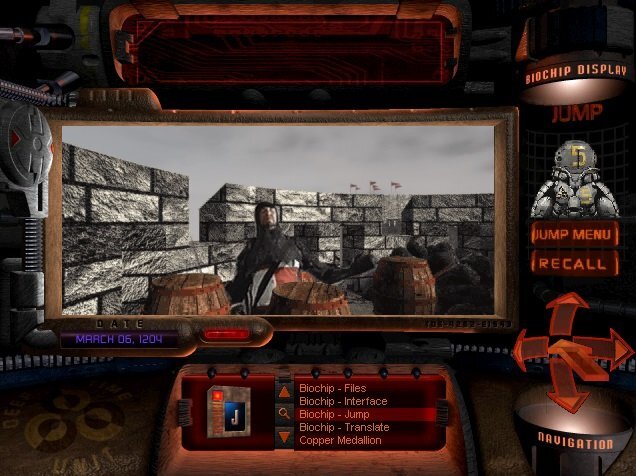
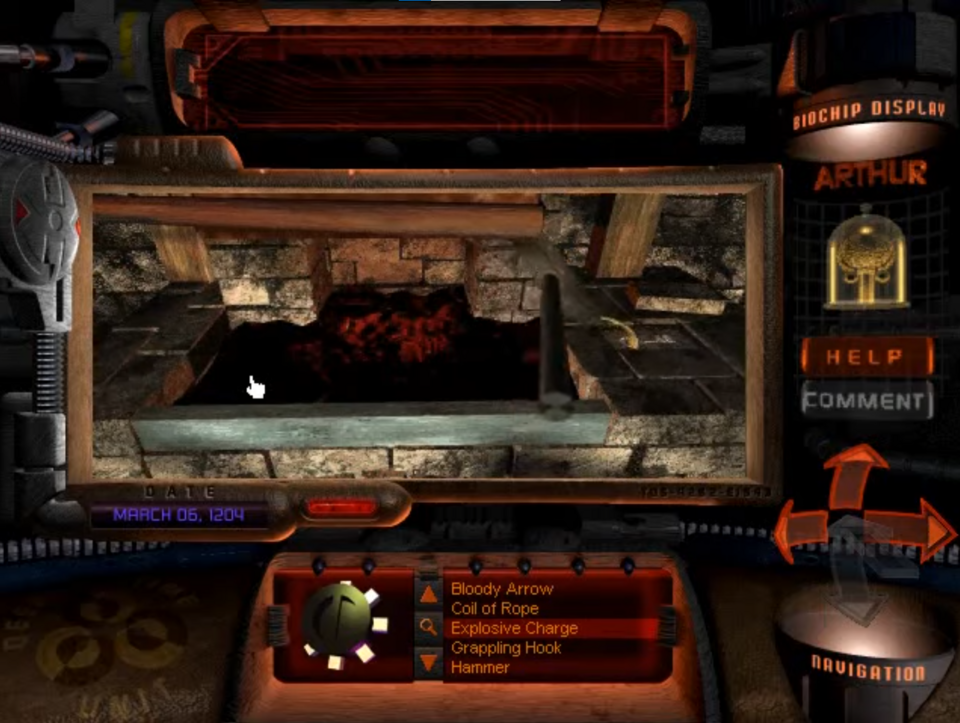
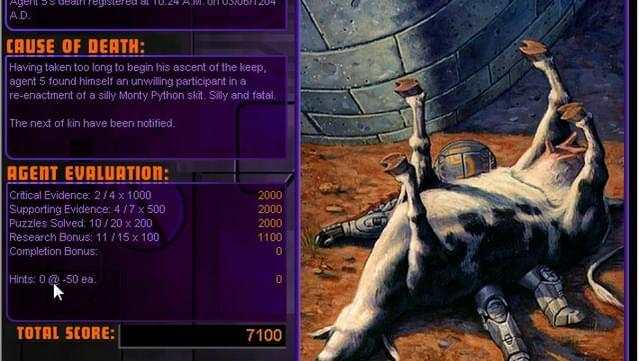
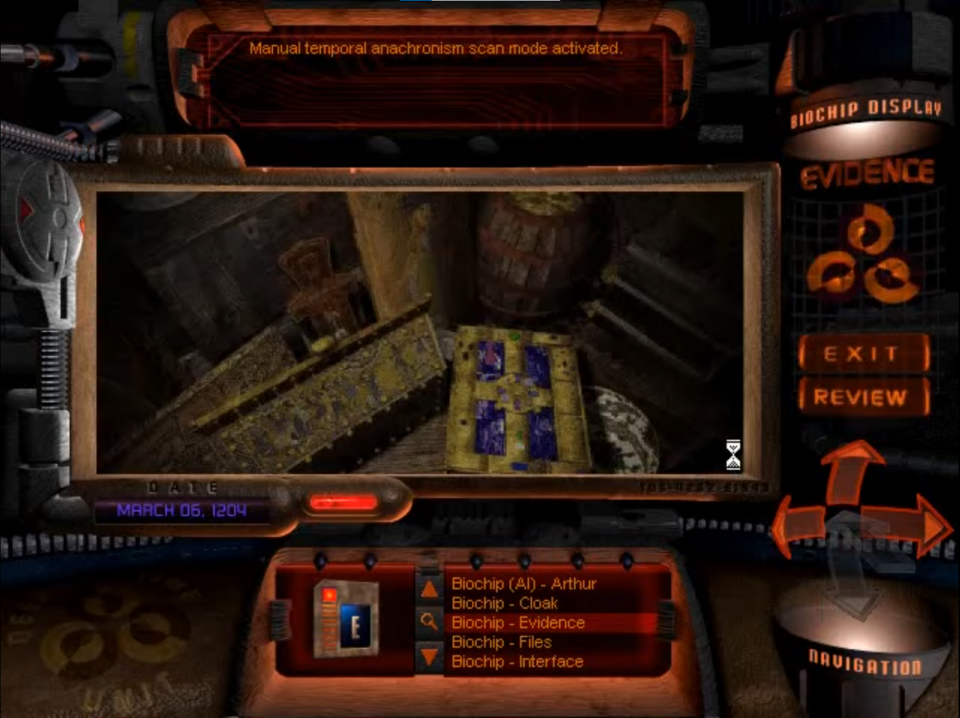
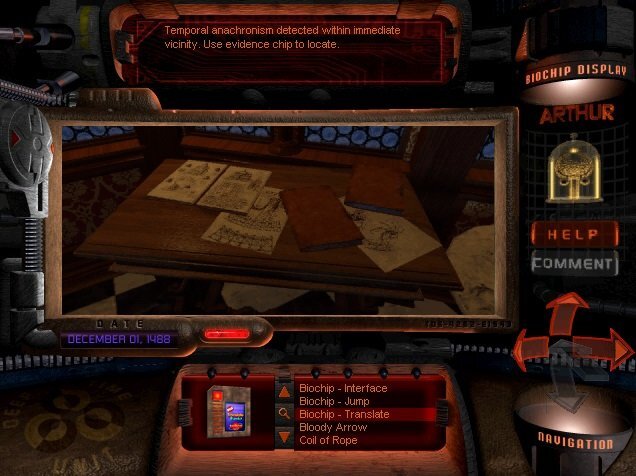

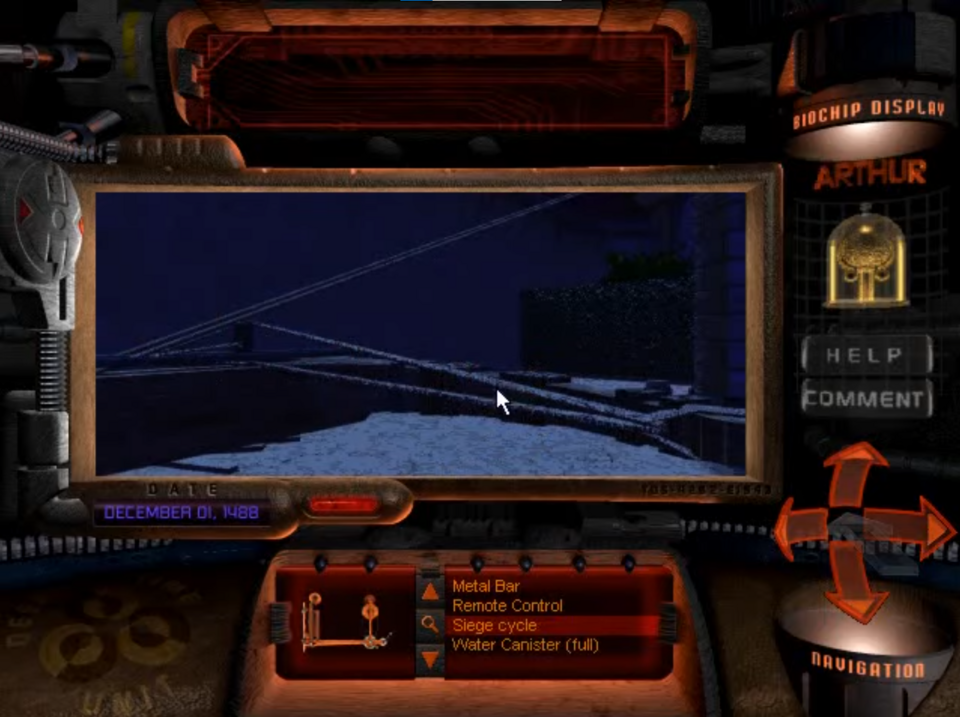
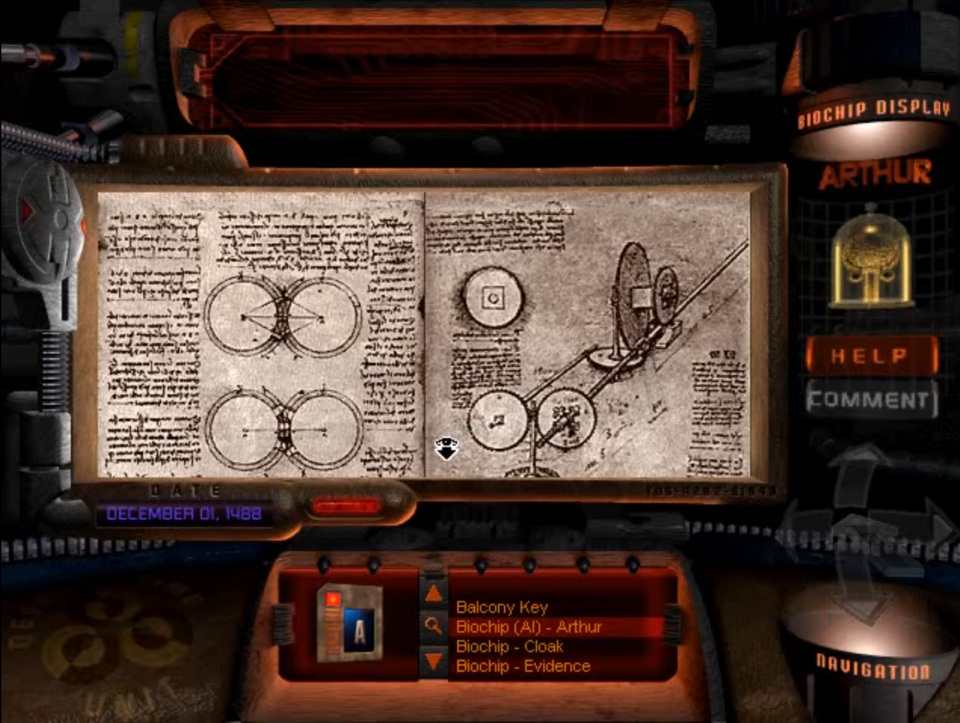
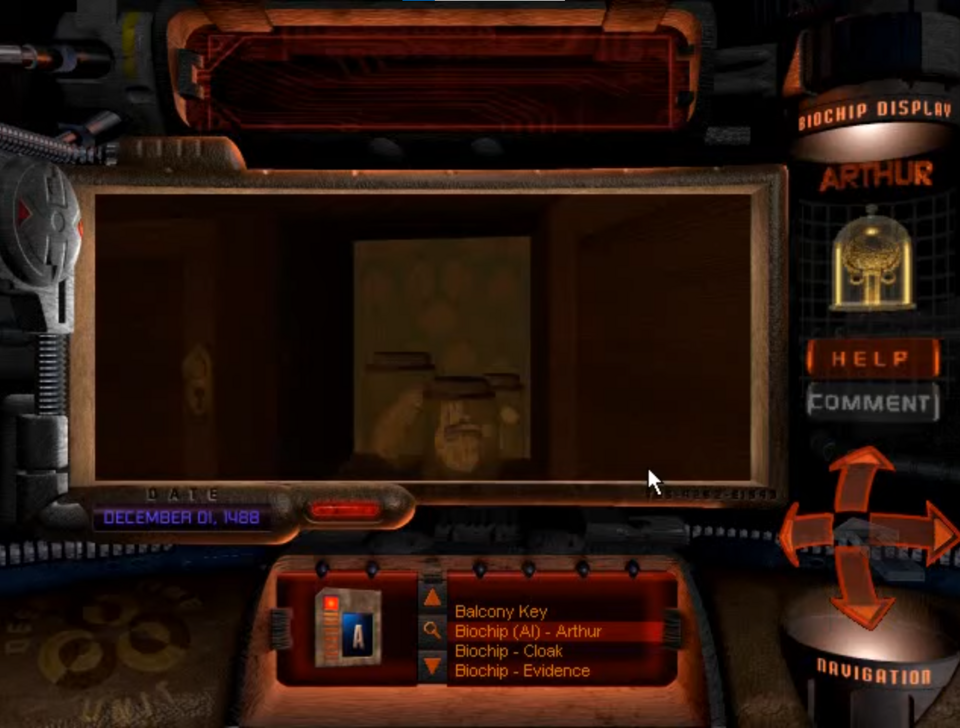
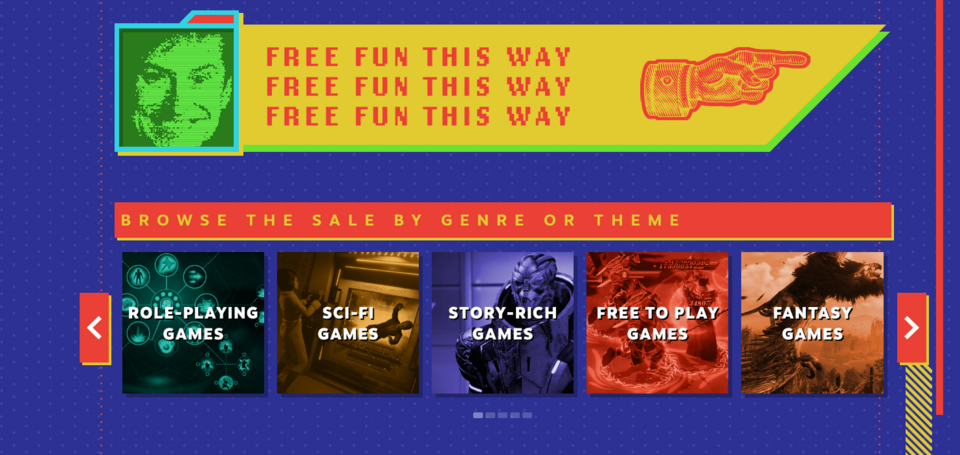

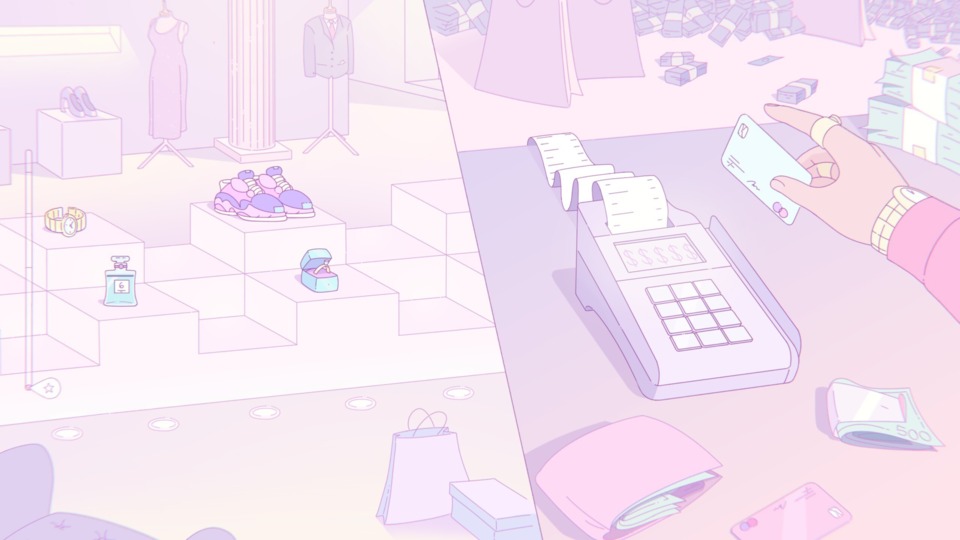
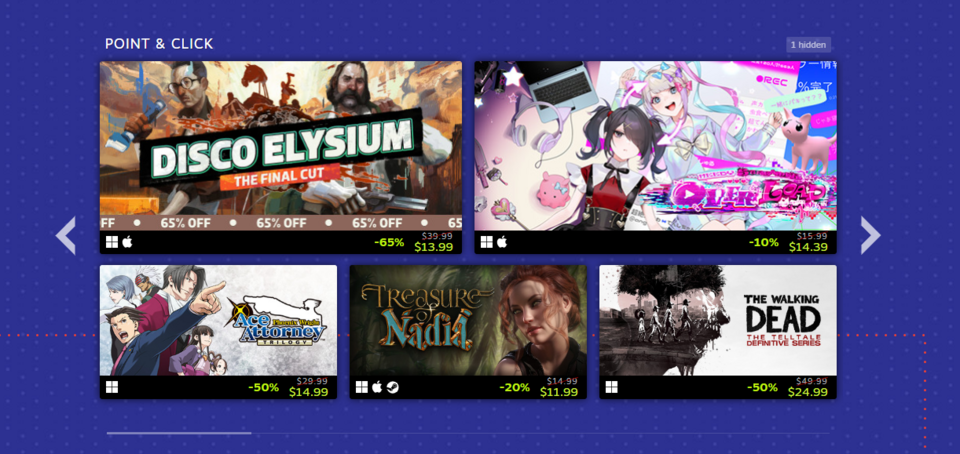

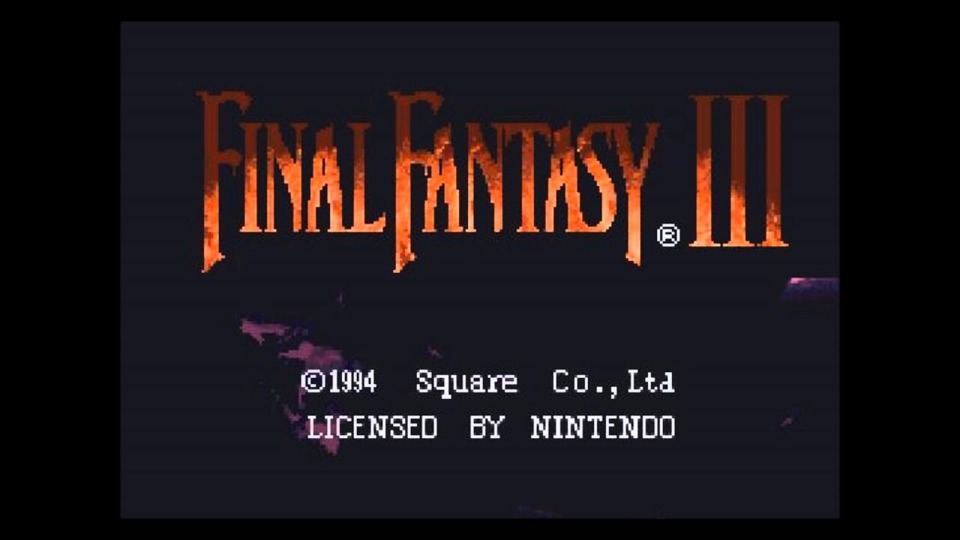
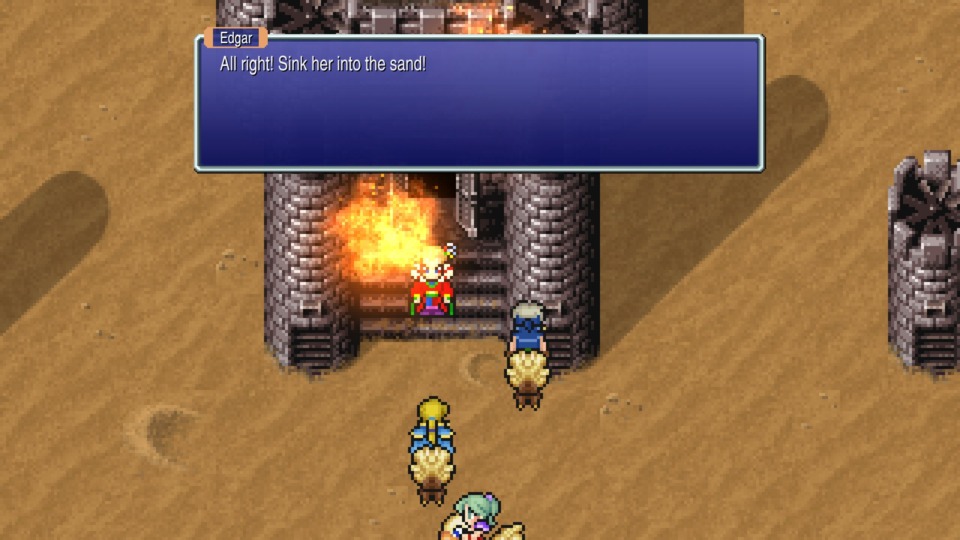
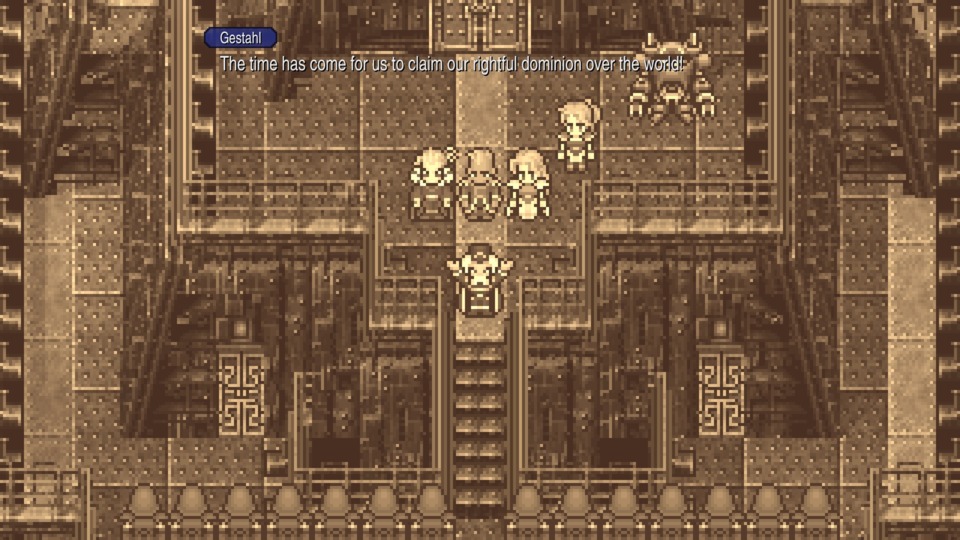
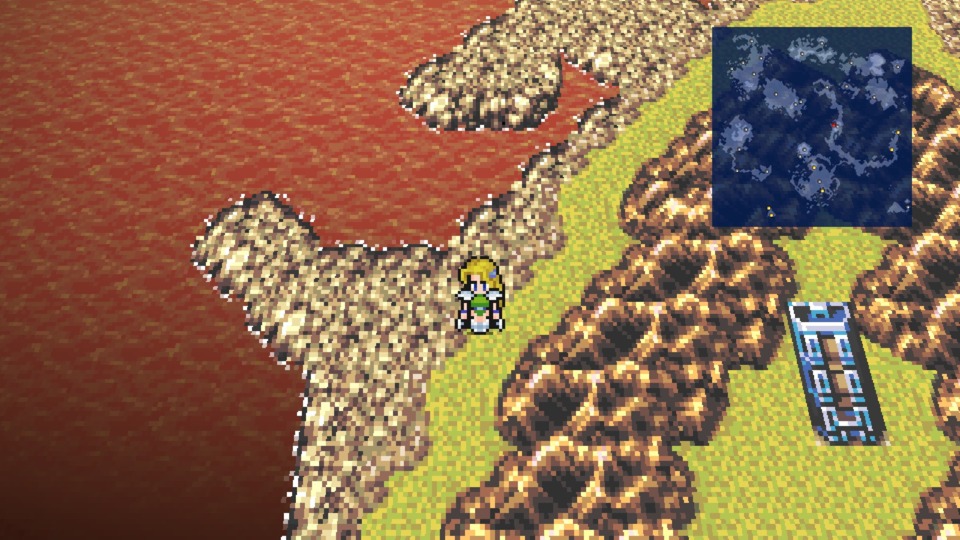
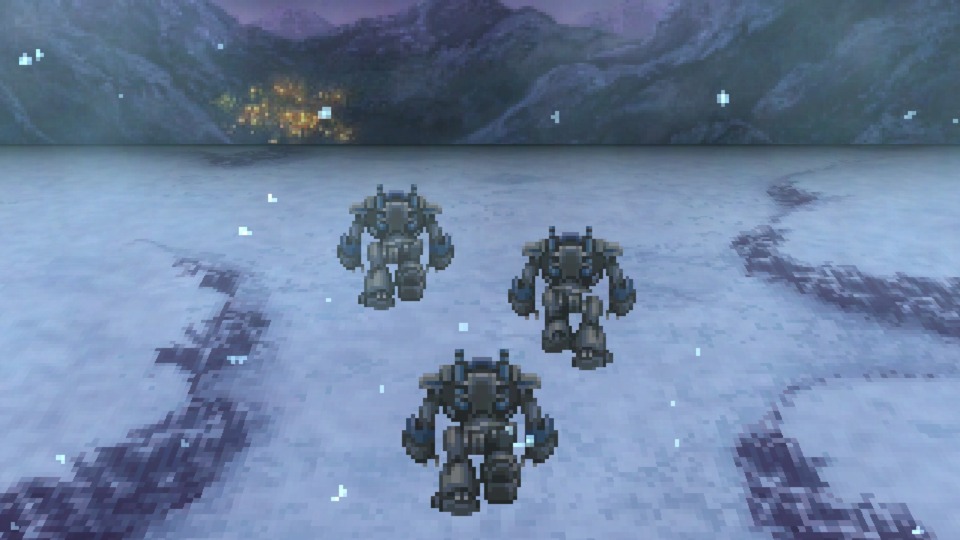
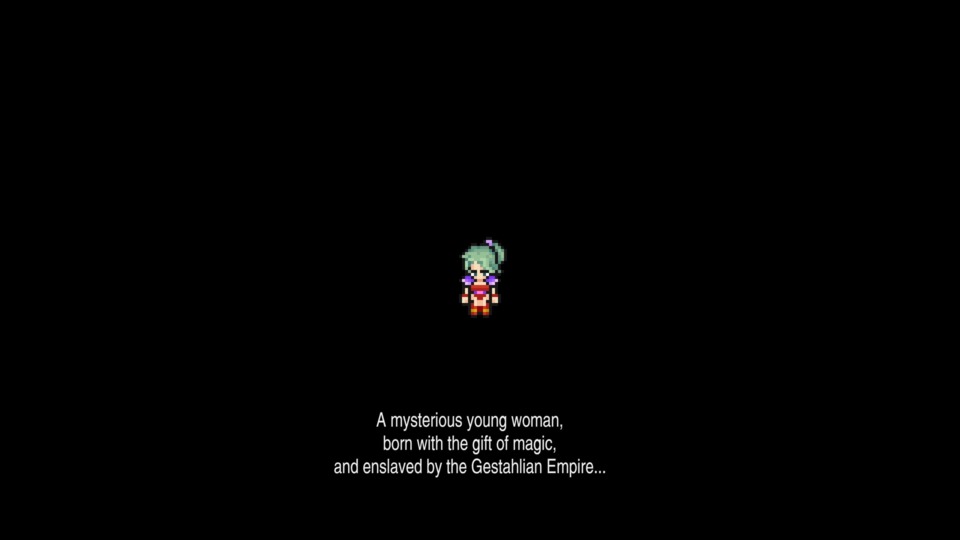
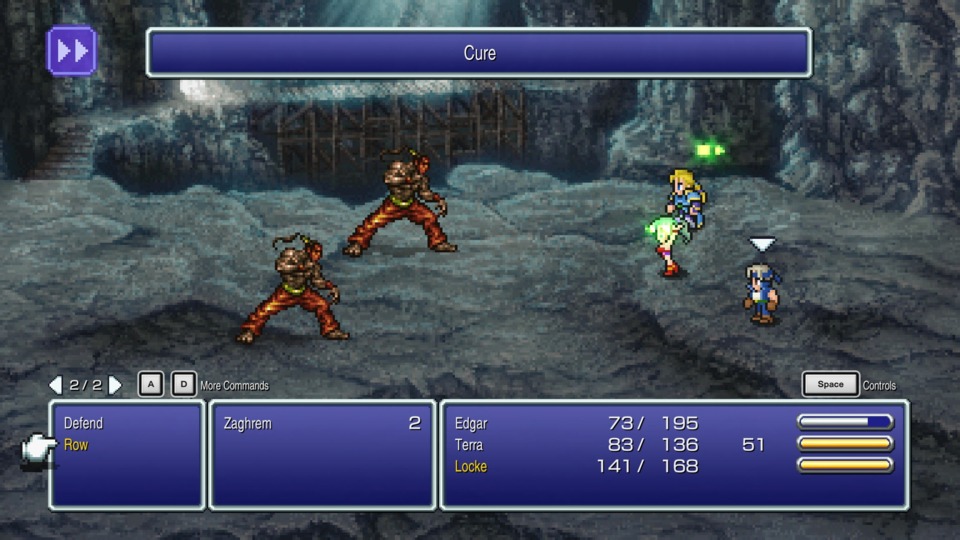
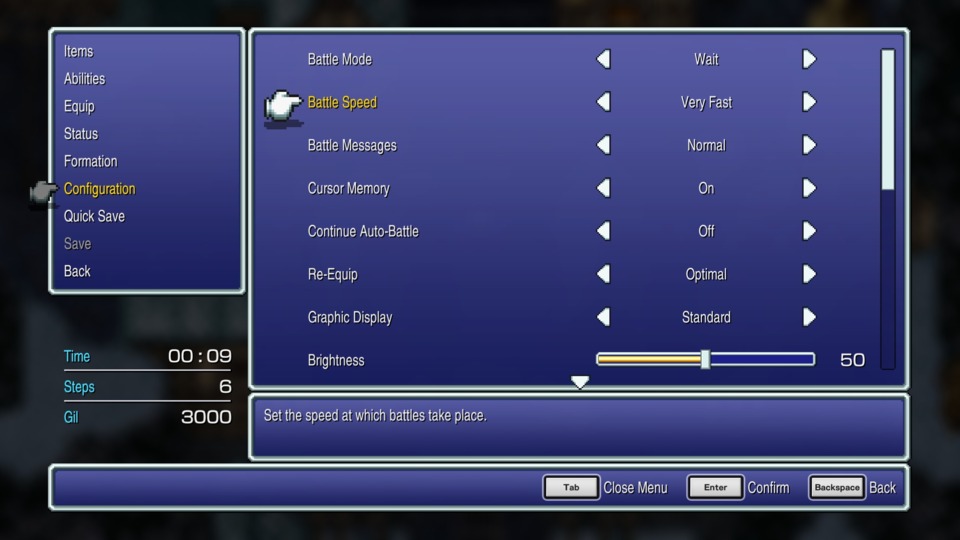
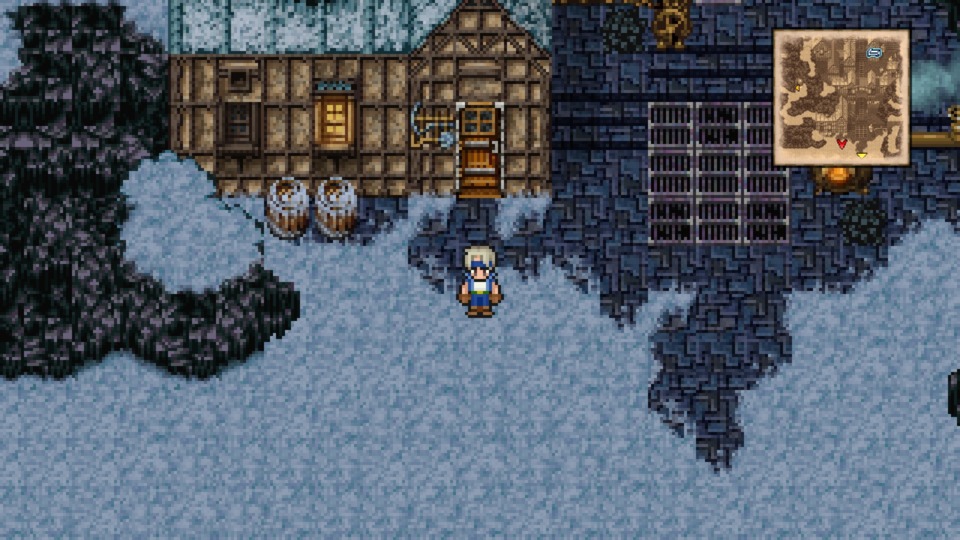
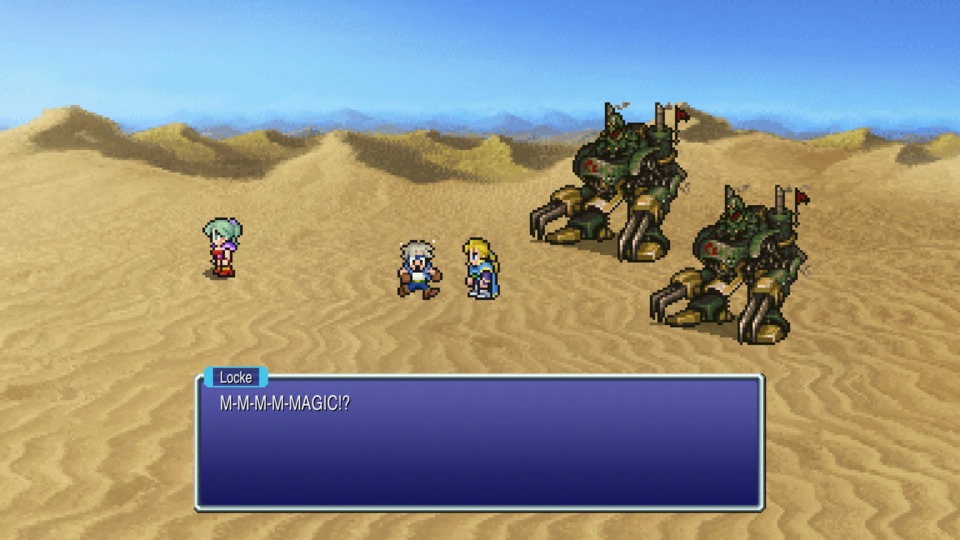
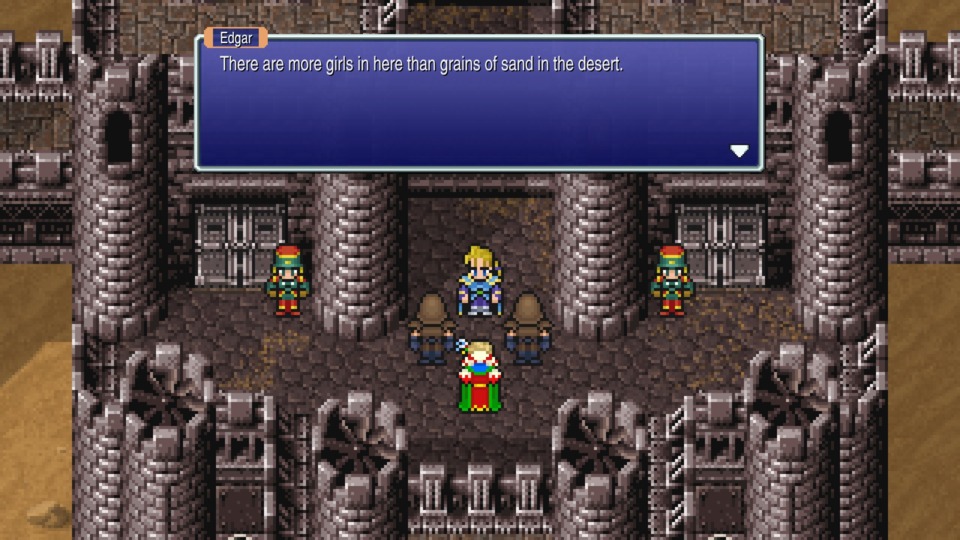
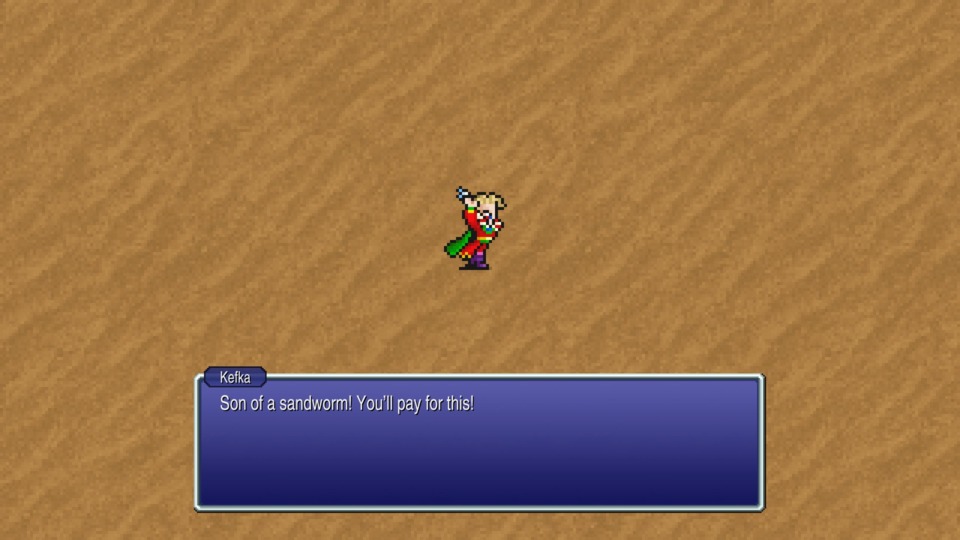
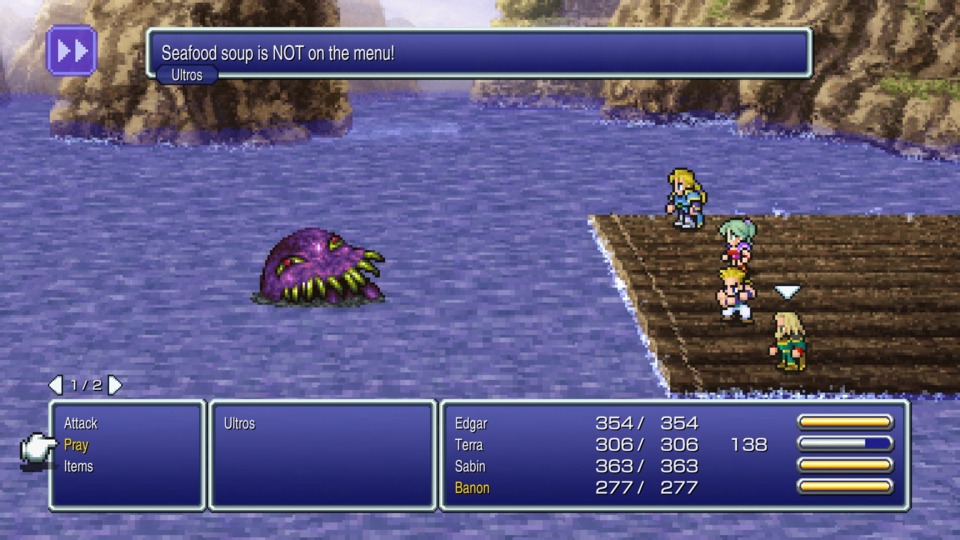
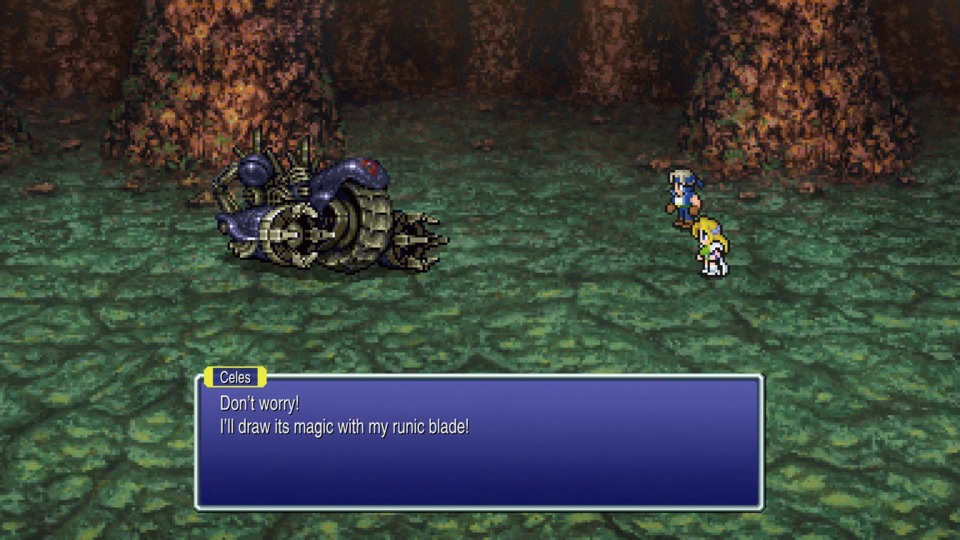
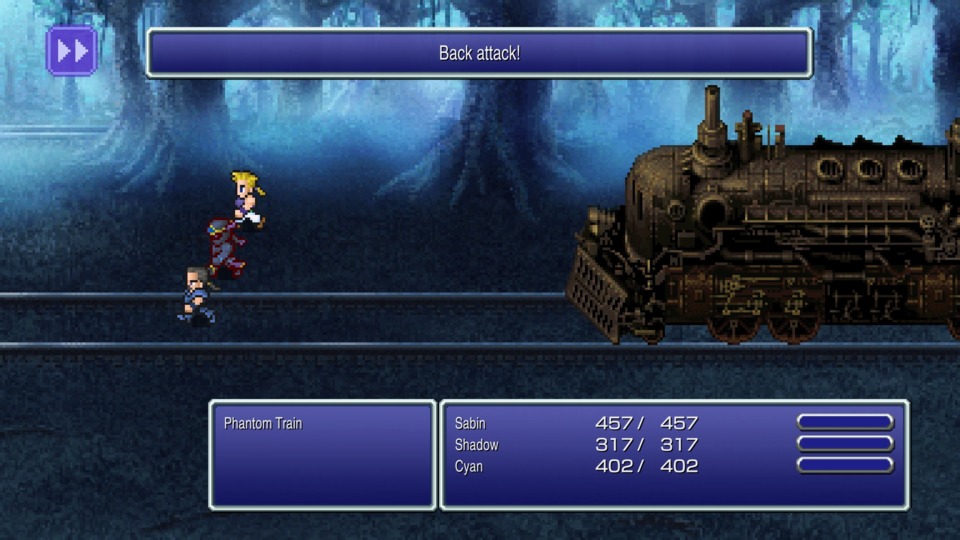
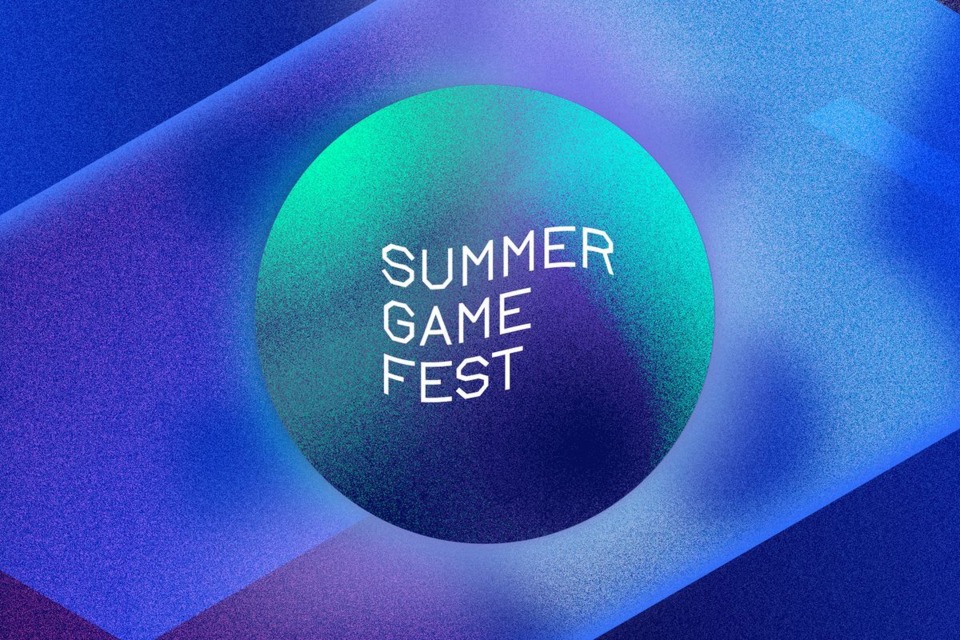


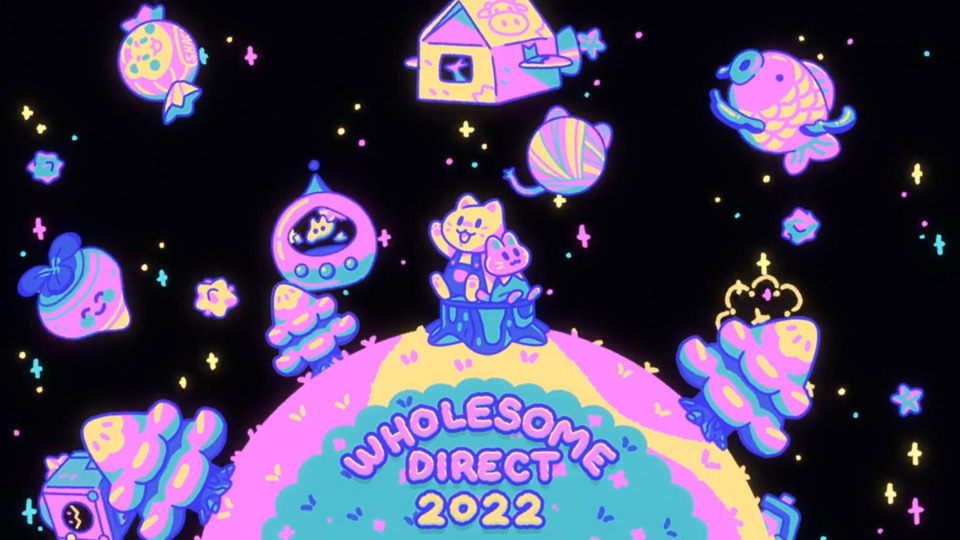
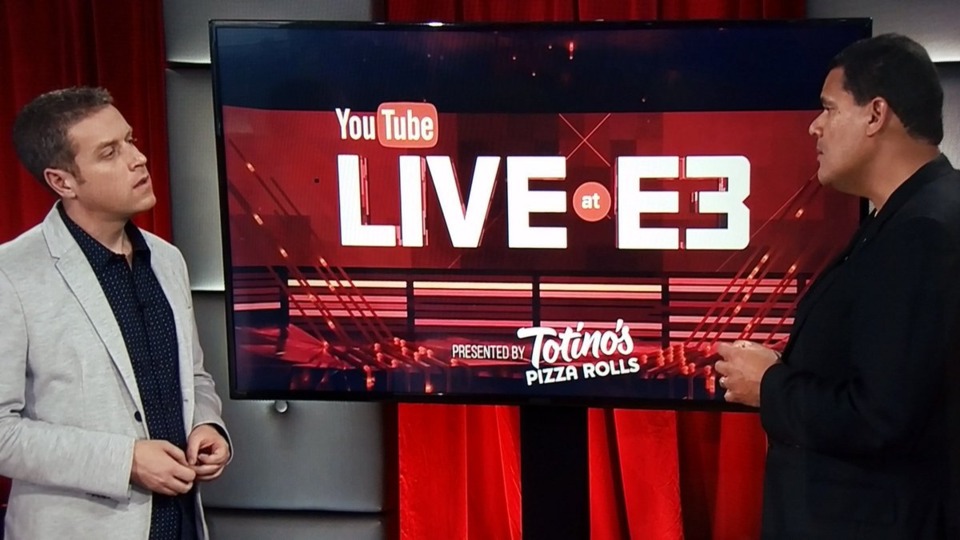
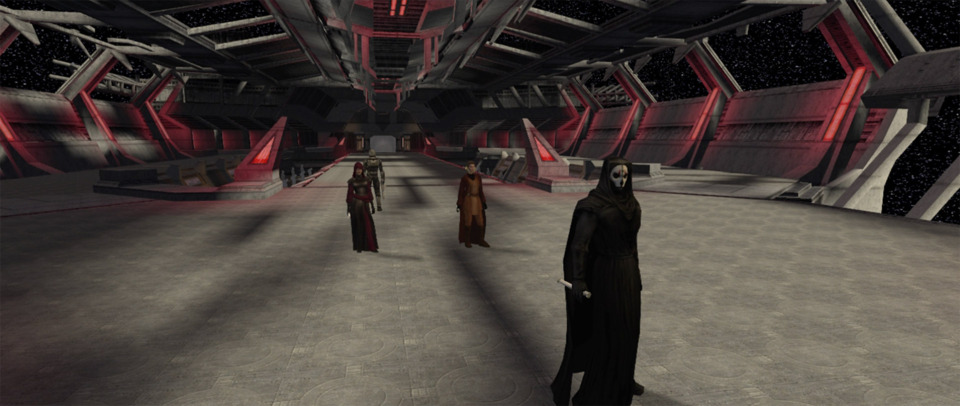
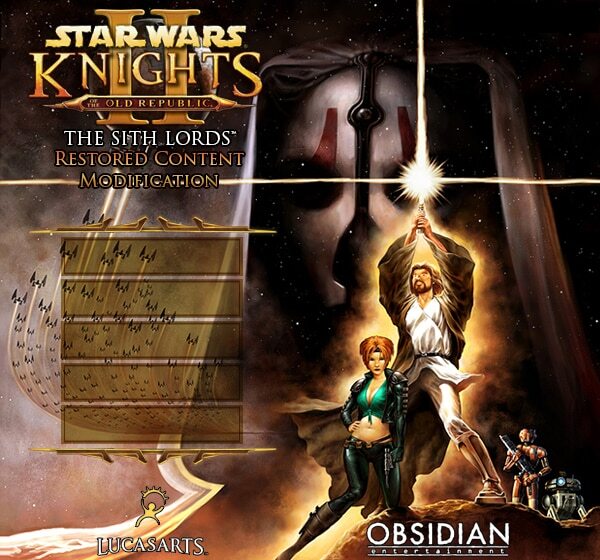
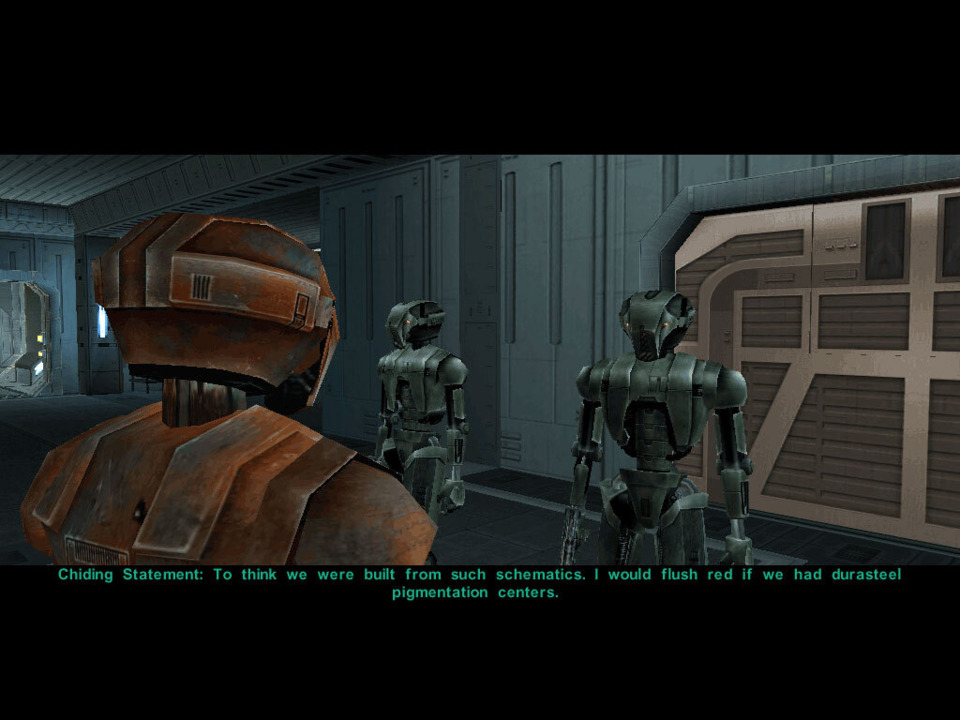
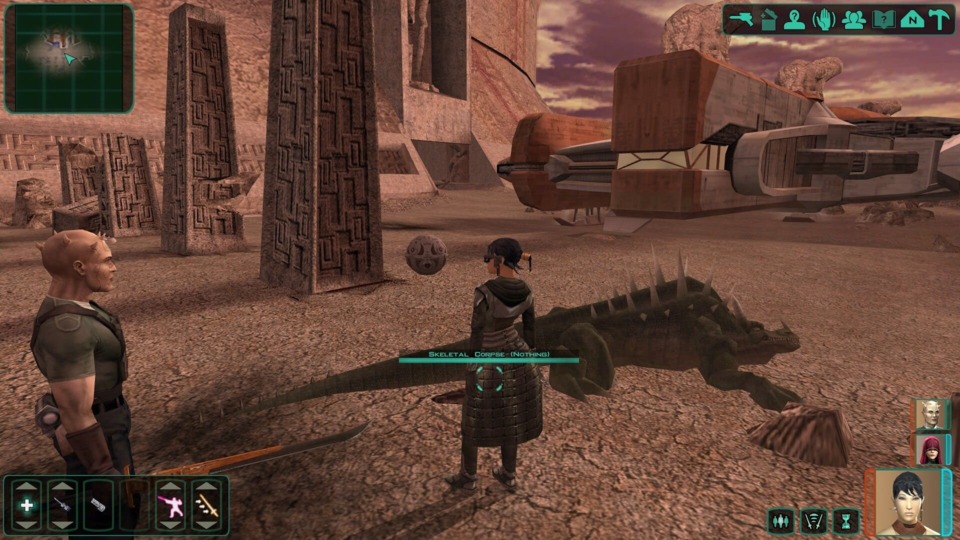
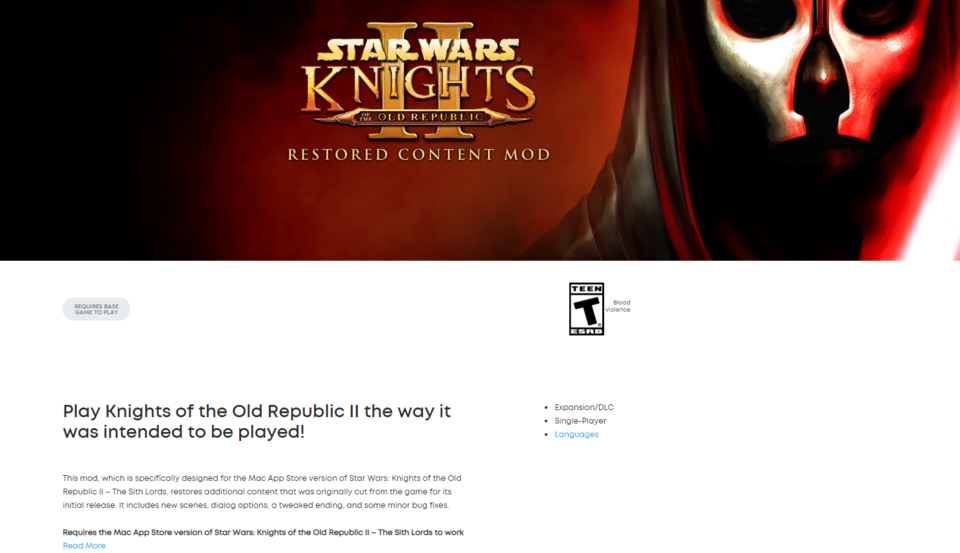
Log in to comment